January 22 - 28 2023: Issue 568
Broken Bay Customs Station At Barrenjoey: 2023 Reprise
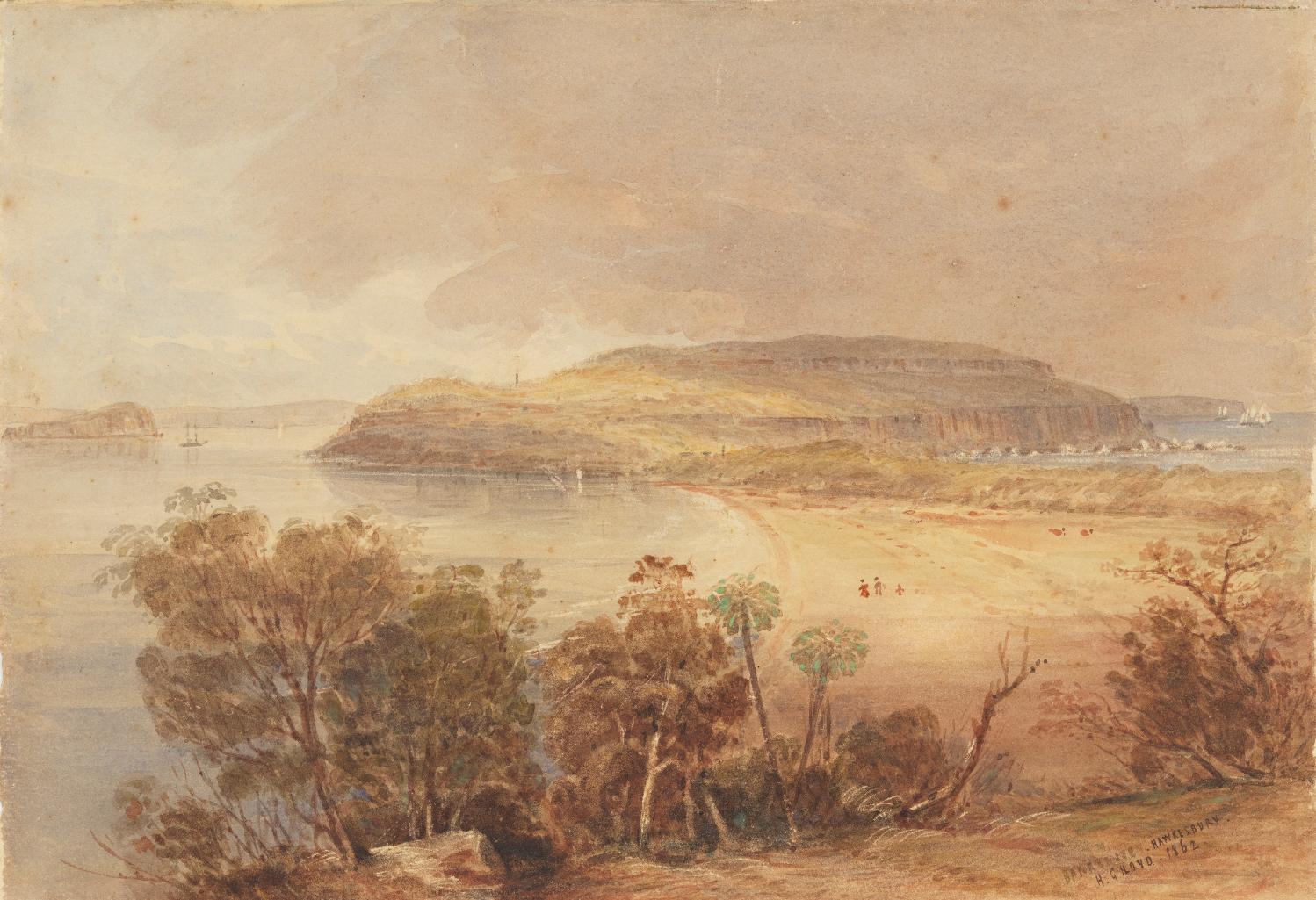
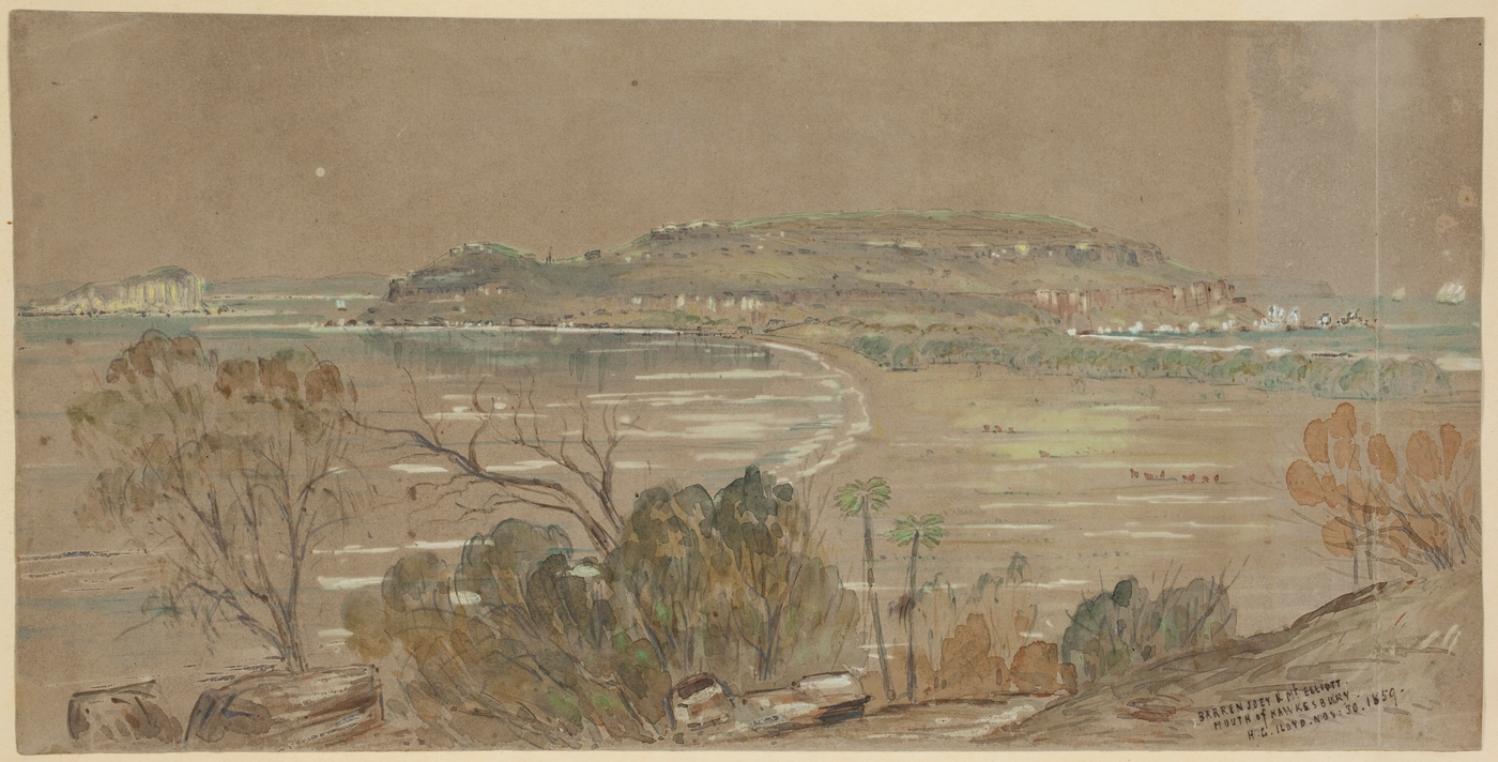
With the second Barrenjoey Rally organised by the Palm Beach-Whale Beach Association being held on Sunday January 22nd 2023 at 11am alongside historic Station Beach, following on from the 2013 Save Barrenjoey Rally, and so many residents opposed to the State Government's plans to commercialise, yet again, this historic landmark and its precinct, an insight into how and why the Broken Bay Customs Station was commenced may be of interest to residents.
In Smuggling at Broken Bay by Shelagh Champion OAM a notorious instance of smuggling in Pittwater indicates a ‘final straw’ and reason for constructing and maintaining a Customs Station in Broken Bay by 1842. Pittwater, Broken Bay and the many tributaries of the Hawkesbury with all their caves along shorelines and creek beds were obvious places to hide contraband and move it overland into Sydney. The amount of large and small vessels coming and going or mooring in Pittwater’s quieter waters when gales made seas dangerous, and a logged count of these, would have added impetus in checking the destinations and safety of the many ships running up and down the east coast of Australia.
The Pittwater waterways and sheltered coves in the early days of New South Wales settlement by Europeans were considered to be Sydney’s second harbour and a port people at leisure as well as in the business of shipping goods knew well. Relatives of original settlers speak of an attitude of Pittwater being far enough away from Sydney to be free of the scrutiny of Law keepers. With men who also worked their own holdings appointed as constables for the district, Martin Burke and Robert MacIntosh (Pittwater) Robert Henderson (Brisbane Waters), a man who later sold rum, ambiguity around those sent to catch crooks smuggling or residents running illegal stills focused further scrutiny on the district. Interestingly the name of a local cave, the ‘Hole in the Wall’ at Avalon, seems to illustrate a long held local attitude towards the ‘rogue’s game’;
''Hole In the Wall."
When I was in Scotland, I visited many crofter's homes in the Highlands with my uncle, a minister of the Church of Scotland. The typical home of the Scotch peasants consists of a passage and a "But and Ben" on the ground floor, and a loft above the "But" is the living room or kitchen, and the "Ben" is the best room. In both are the concealed beds always known as box-beds. Sliding doors hide the beds during the day. I have seen these beds in a modern flat in Glasgow, and in crofters' homes around Grantown, also at Cromarty, Inverness, Dingwall, Oban, and Helensburgh, but never heard them called "The Hole in the Wall;" they are always termed box-beds. I believe Robbie Burns was born in one, and I think so was Hugh Millar.
Is it not more likely that the old Inn at Paddington called "The Hole in the Wall" derived its name from the old "Hole In the Wall" at Pittwater, near Sydney, which was well known 70 or 80 years ago, or from some similar natural formation in the cliffs found very frequently along the Cornish coast. These were commonly associated with the smuggling of brandy and French wines to escape the duty. Many a boatload of contraband spirits escaped the excise officers by disappearing through one of these, natural arches called "The Hole in the Wall." It seems very possible that some old Sydney Innkeeper associated with smuggling in his early days, or with the providing of duty free spirits, called his inn by this name in the hope of attracting ex-smugglers, seamen, and others who, on principle, preferred spirits that had evaded the duty. I am, etc., MARY E. J. YEO. Yass, Oct. 27. "THE HOLE IN THE WALL.". (1927, October 31). The Sydney Morning Herald (NSW : 1842 - 1954), p. 8. Retrieved from http://nla.gov.au/nla.news-article28054926
More about the 'Hole in the Wall' in St Michael's Cave - North Avalon Headland: Some History
The fictional ‘Three Fifties and a Ten’ by the proprietor of the ‘Hawkesbury Chronicle’ George C Johnson, written under one of his nom de plumes, 'Kooyal', gives a further great recounting of one groups escapades meeting a ship off Barrenjoey and moving contraband up the river. Another letter regarding the then recent offloading of rum and brandy from the Fair Barbadian into Broken Bay ignited the District’s infamy anew and was a clarion call demanding to be answered:
SMUGGLING. To the Editors of the Sydney Herald.
GENTLEMEN,--As the late seizure of spirits made by the Water Police, is now the general topic of conversation, I have no doubt it will arouse the Government from the state of apathy and indolence in which it has been indulging itself for the past two years, and show its members the necessity of taking the most prompt and energetic measures, in order| to put a stop to a practice which threatens materially to diminish the revenue, and cause distress to the fair trader : for there can bono doubt, that although the quantity lately seized is large, yet we are warranted to say that it bears a very small proportion to that already successfully run during the past two years, or since the extra inducement has been held out by the Government in the increase of duties ; an inducement which would have yielded to the smuggler of the above spirits, had he succeeded, a clear profit of upwards of £280 above the amount of duties, hail they been as before, at 10s. 2d. per gallon; with such a fact before our eyes, let us ask the Government what has it done to prevent these nefarious transactions? Has it increased the number of revenue officers? Has it established any outports along the coast? No! Or, in a word, has it taken such measures as the nature of the coast, and the inducement offered to the smuggler, would lead us to expect? We are reluctantly compelled to answer in the negative. But leaving for a short time the above, let us take a slight glance at the manner in which these smuggling transactions are carried on, which is simply as follows : a merchant enters for exportation a certain quantity of spirits, signs the usual bonds, passes the proper entries, which being duly accomplished, a Custom House officer is appointed to see the goods properly shipped, which is accordingly done; thus far everything goes on correctly. After receiving the quantity of spirits and tobacco intended to be run, the vessel clears out for Guam, New Zealand, or some such port, hovers about the coast some time to see if she is observed, runs into Broken Bay, and there discharges her cargo, which is stored in some secluded spot, and brought up to Sydney in small quantities, (according to the demand), by the various coasters in the employ of the agents at those parts; these, upon arrival, land their cargoes without the slightest examination, which are accordingly carted away and deposited in the warehouses, and the smuggling finally and successfully completed.
If the above is a correct statement, of the manner in which smuggling is carried on, surely Government is called upon to use every endeavour, if not entirely to suppress, at least to prevent its being carried on to so alarming an extent in the first place, if instead of allowing the revenue cutter to lie idle in the harbour for weeks together, it was sent to keep a continued and vigilant cruise along and in the inlets of the coast, much good might be effected; again, an, active revenue officer with a boat's crew, might be stationed at Broken Bay, or one of the most convenient spots to overhaul every coaster in and out; and thirdly, one or two officers might be stationed to examine the discharge of the coasters, these, with an active watch by the Water Police stationed at Goat Island and Bradley's Head, and keeping an eye at Johnson's Bay, might tend materially to lessen such practices,-and there is no doubt that the increase of the revenue would fully meet the increasing expense of such appointments, and give satisfaction to all parties opposed to this wholesale system of smuggling. COAST GUARD. SMUGGLING. (1842, June 25). The Sydney Herald (NSW : 1831 - 1842), p. 2. Retrieved from http://nla.gov.au/nla.news-article12875864
Government discussions then took place;
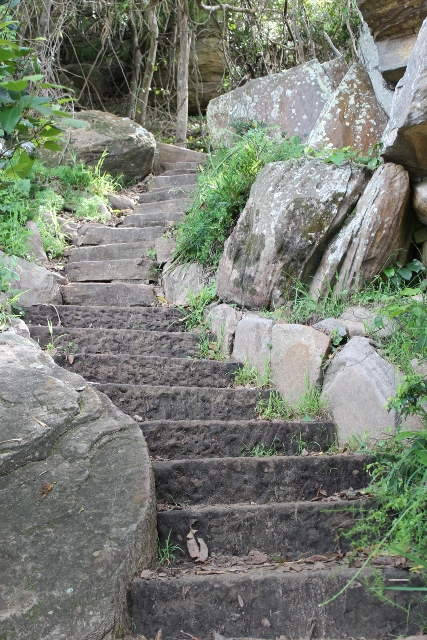 Some conversation took place relative to some additional officers being stationed at Broken Bay, for the prevention of smuggling in that neighbourhood. The Governor said he was aware that it was requisite something should be done in that quarter, but he was not yet prepared with any measure to propose to the council. Legislative Council. (1842, August 11). Australasian Chronicle(Sydney, NSW : 1839 - 1843), p. 2. Retrieved from http://nla.gov.au/nla.news-article31736840
Some conversation took place relative to some additional officers being stationed at Broken Bay, for the prevention of smuggling in that neighbourhood. The Governor said he was aware that it was requisite something should be done in that quarter, but he was not yet prepared with any measure to propose to the council. Legislative Council. (1842, August 11). Australasian Chronicle(Sydney, NSW : 1839 - 1843), p. 2. Retrieved from http://nla.gov.au/nla.news-article31736840
While the trial of those responsible appeared in local newspapers late in 1842, four convicts were sent to build a three roomed timber Customs House and track up to the headland. On 1 November 1st 1842 John Broadley Howard wrote to His Excellency the Governor, soliciting the appointment as Customs Officer. From the Customs House, Sydney, he wrote that;
“I have been upwards of six years a Clerk in this Office, and that previously I had been many years engaged in Maritime pursuits abroad & am well experienced in the management of Boats and affairs of shipping generally.” He was also intimately acquainted with all the vessels belonging to the port at Sydney, and their owners, which he thought would give him an advantage over a stranger in the job. [AO 4/2723] His appointment was recommended by Colonel Gibbes, the Collector of Customs on 23 January 1843. Gibbes described him as being the “third clerk in the Long Room” at the Customs House. Howard was given his orders by Colonel Gibbes on 15 April 1843. [AO 4/5113]
“Three tents will be lent, one for the Officer, one for the Coxswain, and one for the five men until such time as the Huts are erected. The men’s Huts are to [be] built on the Green mound at the foot of the Mountain called Barrenjuee to the Northward and Westward of the Creek and not to extend to the Southward of a supposed line drawn from a large rock on the western Beach, directly East to the Sea. These Huts to be formed of Slabs, with Shingle Roofs - a door - window - and fire place.
The Main Hut to be fourteen feet by ten and the Coxswain’s Hut ten feet by eight exclusive of the fire places. The Officer to place his House on such Spot as he may select - but not more than 400 yards from the men. The first point to be attended to will be to lay down the moorings for the large Boat near the Beach, but where she will not ground at low water and to which she is to be chained and locked. The next to deepen the water hole up the mountain by which a constant supply will be insured. The third to form a winding path up the South face of the Mountain (by clearing the bushes and making steps where required) to a flat space on the top near the western end where a Sentry Box, or watch Hut is to be built, and a flag staff erected. The Commander of the Cutter will point out the several sites. The Coxswain and two hands should be sent to procure slabs, posts, and ground plates and Bark. Two men should first clean the water Hole and afterwards clear the Path. Shingles and battens will most likely be bought cheaper than the men can split them; I should think from 7/- to 10/- the thousand and 3000 will do the two Huts. Stone enough can be procured for rough chimneys and some shells burnt for lime. The Carpenter should put up the bark watch Box and then proceed with the Huts, assisted by the two men who will have finished the Path. When all these matters are finished, all hands can go on with the Officer’s House, store and kitchen.”
The men in the Broken Bay Party were the Coxswain, John Bailey, Ticket of Leave, and five convicts (a carpenter and four boatmen). Howard’s salary was fixed at £175 per annum, with an additional £50 per annum to provide quarters for himself and family, and for the six men. The Government did not provide a house for him, but he regarded his allowance for rent as “handsome”, and thought it fair to put up a respectable cottage. By June the buildings had already cost £85; by August he had laid out above £100 and reckoned on £50 more before he had “made the station look at all comfortable.”
There was another worry: there was no suitable Government land available in the vicinity, and he had to build on private land belonging to the Wentworth family. By March 1844 he was in debt, the buildings having cost more than £200, besides which there was a demand from Captain Towns (the husband of D’Arcy Wentworth’s daughter Sophia) for £25 per annum rent, which Howard, although resisting, appeared to think was his responsibility.
The cottage was built beside where the current Ranger's House is. Directions from Colonel Gibbs of the Customs Service, Sydney, regarding the track were to
"Form a winding path up the south face of the mountain by clearing the bushes and making steps where required, to a flat place on the top near the western end where a sentry box or watch hut is to be built and a flag staff erected."
When the Customs Station was established, ships were required to report before entry into Broken Bay, so a watchman was posted to observe vessels arriving and departing. - "Tales of Barrenjoey" Jervis Sparks, 1992. National Parks and Wildlife Service NSW
This track is what we now know as 'Smugglers Track'; a steep, winding and narrow path. These prerequisites were completed by April 25th 1943 at quite a large sum - but in consequence of the formation of an establishment at Broken Bay, which had been deemed absolutely necessary, in order to prevent the recurrence of frauds on the revenue, which had been perpetrated to an enormous amount, an additional expense of £4386 10s. had been incurred. Legislative Council. (1843, September 30). Australasian Chronicle (Sydney, NSW : 1839 - 1843), p. 2. Retrieved from http://nla.gov.au/nla.news-article31741175
The first Customs Officer of Broken Bay did not have an auspicious beginning;
Providential Deliverance.
On Wednesday last, a boat was picked up in the vicinity of Bird Island by the steamer Thistle, on her passage from Morpeth. She had made signals to the steamer, which was instantly stopped for the purpose of affording succour. The boat was found to belong to the customs, having on board Mr. Howard and a party of three men from the custom's department, who had left Sydney in company with the revenue cutter, which latter was taking down several articles for the formation of the establishment of customs at Broken Bay ; and, upon getting outside the Heads, it commenced blowing very hard from the southwest, when the boats separated, Mr. Howard's boat being drifted off the land, which not withstanding their utmost exertions the men could not gain again, and in all probability never would, as they were twenty-four hours short of provisions, and being somewhat exhausted, they must inevitably have been drifted off to sea and perished, had not the Thistle providentially rescued them from their perilous situation. Captain Mulhall took them onboard the Thistle, and also had the boat hoisted in, and brought them back to Sydney. The other boat, which had also three men on board, has 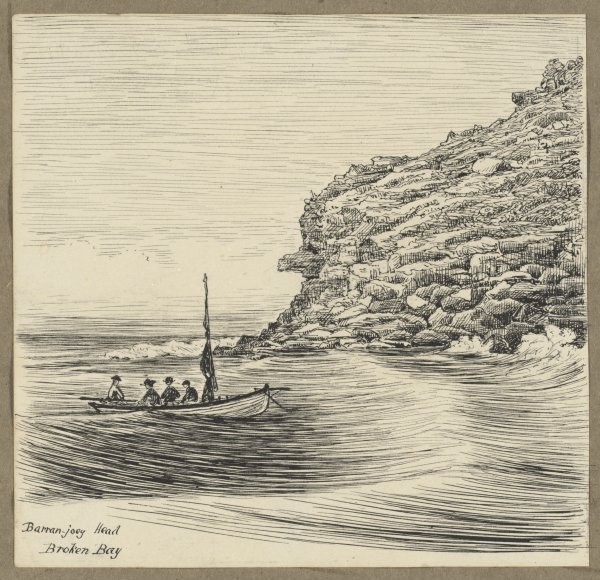 not since been heard of, and fears are entertained for her safety. SYDNEY. (1843, May 20). Launceston Examiner (Tas. : 1842 - 1899), p. 6 Edition: EVENING. Retrieved from http://nla.gov.au/nla.news-article36233574
not since been heard of, and fears are entertained for her safety. SYDNEY. (1843, May 20). Launceston Examiner (Tas. : 1842 - 1899), p. 6 Edition: EVENING. Retrieved from http://nla.gov.au/nla.news-article36233574
Left: Barranjoey Head, Broken Bay [1884?] nla.pic-an6438965 by Graham, H. J. (Harold John), 1858-1929. Courtesy National Library of Australia
Mr Howard was one of many men who became fathers while stationed at Barrenjoey:
On Wednesday, the 14th instant, at the Customs Station, Broken Bay, Mrs. J. B.Howard, of a daughter. Family Notices. (1845, May 21). The Sydney Morning Herald(NSW : 1842 - 1954), p. 3. Retrieved from http://nla.gov.au/nla.news-article12879665
Apart from keeping an eye on all things shipping Mr Howard was an example of another obvious responsibility these men undertook was to care for those who came within their waters:
Shipwreck. - On Tuesday last, the 22nd instant, about thirty minutes past eight p.m. the cutter Mary Walfe, master, belonging to Mr Parnel, parted her cable whilst laying off Mount Elliott and went ashore. The master and his mate, the only persons on board, managed to save themselves and a portion of the stores. They were taken off the island by Mr Howard, the officer in charge of the customs station at Broken Bay, who lent them a boat, and assistance to proceed to the owner of the vessel, who lives up Burrowra Creek. IMPORTS. (1845, May 3). The Sydney Morning Herald (NSW : 1842 - 1954), p. 2. Retrieved from http://nla.gov.au/nla.news-article12879197
In September 1845 Mr. Howard received a promotion, being appointed Sub Collector of Customs at Portland Bay, Victoria. His place was taken by Richard Williams, who proved to be an efficient Acting Coast Waiter at Broken Bay, in spite of the total loss of sight in one eye.
NEW APPOINTMENT. — His Excellency the Governor haes been pleased to appoint Mr. Richard Williams, of the department of customs at Broken Bay, to be an inspector of distilleries. DR. LEICHARDT. (1846, April 1). Morning Chronicle (Sydney, NSW : 1843 - 1846), p. 2. Retrieved from http://nla.gov.au/nla.news-article31747700
A CONVICT BOATMAN.—On Saturday last, Mr. Richard Williams, Custom-house officer, stationed at Broken Bay, gave Bartholomew Doran, an assigned boatman to the Customs at Broken Bay, in charge to constable McDonald, of the Sydney Police, for robbing the hut of a man named Cornelius Shee. As Shee was absent when the charge was made, and his hut open and emptied of its contents, the value of the property stolen could not be estimated, Doran, on arriving in Sydney, was forwarded to the Hyde Park Barrack Court. Family Notices. (1847, January 27). The Sydney Morning Herald (NSW : 1842 - 1954), p. 2. Retrieved from http://nla.gov.au/nla.news-article12900402
The Customs Officers accepted the help of Bowen Bungaree, who lived with his family at Barrenjoey, in finding illegal stills and venturing out on dark nights to patrol the waters. His duties in successfully stamping out smuggling and illegal stills within the vicinity could also be attributed to a wooden soldier, installed by later Customs Coast Waiter, Mr. Ross;
PITT WATER. EARLY HISTORY. IN THE DAYS OF THE SMUGGLERS.
In a paper on early Pittwater read at the monthly meeting of the Manly Warringah and Pittwater Historical Society Mr W L Ross said that the inlet was an important centre in the early days of the settlement at Sydney Cove. The Hawkesbury and its tributaries produced the bulk of the cereals for the colony and Pittwater was the port for the farming districts. Shipbuilding was also carried on at Pittwater which was considered a wheat growing area. In 1819 a constable Robert McIntosh was sent to the district to preserve law and order
In 1804 said Mr Ross the natives complained to Governor Hunter that the settlers had grown so numerous that the natives had been driven back from the river. The Governor promised that a portion of the district would be reserved for the natives and the remains of their camping places may still be found around the head of Pittwater. For many years a customs-house remained at Barrenjoey and the customs officer had brushes with smugglers. One customs officer fashioned and erected a wooden figure of a soldier near the beach to check the smugglers. The wooden figure was dressed in a pair of white trousers, a scarlet coat and a tall helmet made of tin surmounted with a plume. There was a sword in the hand of the figure and scabbard at Its side. The figure was placed in front of a cave near where the lighthouse now stands. The figure said Mr Ross kept off many smugglers but the captain of one vessel thinking that the drawn sword was a signal of distress, landed to offer assistance and the ruse was exposed. The figure remained until a few years ago when white ants ate the legs and the figure collapsed " Wooden Soldier. (1927, August 2). The Sydney Morning Herald(NSW : 1842 - 1954), p. 10. Retrieved from http://nla.gov.au/nla.news-article16394068
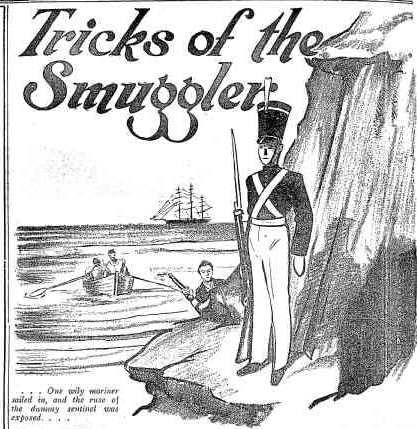 Tricks of the Smuggler By . . E. S. Sorenson. SMUGGLING was a more or less active waterside industry even before the roaring days of the goldfields, which attracted hordes of Chinese to the country. Pittwater seems to have been the first port for the illegal traffic. A custom house stood at Barrenjoey, where the officer in charge had many a brush with the smugglers. At last the official rigged up a dummy soldier to scare them oft". The figure was made of wood, dressed in white trousers, scarlet coat, and tall tin helmet stir mounted with a plume. With a sword in hand and scabbard at his side, Dummy was stationed in front of a cave near the present lighthouse, and for a time his presence caused the smugglers to sheer oft". Then one wily mariner, after a long scrutiny, noticed that the sentinel never moved, even to scratch himself. So he sailed in, and the ruse was exposed. But the figure remained for years afterwards, till white ants ate his legs away and he collapsed. Tricks of the Smuggler. (1936, May 29). The Land (Sydney, NSW : 1911 - 1954), p. 14. Retrieved from http://nla.gov.au/nla.news-article104230976
Tricks of the Smuggler By . . E. S. Sorenson. SMUGGLING was a more or less active waterside industry even before the roaring days of the goldfields, which attracted hordes of Chinese to the country. Pittwater seems to have been the first port for the illegal traffic. A custom house stood at Barrenjoey, where the officer in charge had many a brush with the smugglers. At last the official rigged up a dummy soldier to scare them oft". The figure was made of wood, dressed in white trousers, scarlet coat, and tall tin helmet stir mounted with a plume. With a sword in hand and scabbard at his side, Dummy was stationed in front of a cave near the present lighthouse, and for a time his presence caused the smugglers to sheer oft". Then one wily mariner, after a long scrutiny, noticed that the sentinel never moved, even to scratch himself. So he sailed in, and the ruse was exposed. But the figure remained for years afterwards, till white ants ate his legs away and he collapsed. Tricks of the Smuggler. (1936, May 29). The Land (Sydney, NSW : 1911 - 1954), p. 14. Retrieved from http://nla.gov.au/nla.news-article104230976
After Mr. Williams left a Mr. Collyer was in charge, although it is apparent he was still around in 1851:
PITTWATER, BRISBANE WATER, AND THE HAWKESBURY.
These places, although near Sydney, are but little frequented by Sydney people, except by such of the coasting traders as go there for grain, timber, and shells. No part of the country, however, affords a better field for the home tourist toil-worn citizen who is able to spare a days from his ordinary avocations will find it much cheaper, as well as more healthful to take a voyage in this direction with his family than to visit the interior towns. During, the summer season, there are many small coasters lying idle at their moorings in consequence of their having little or nothing to do, and these, with a couple of seamen to work them, may be hired for a mere trifle for the task. Several days will be occupied in the journey upwards, but on arriving at Windsor the tourist may return to Sydney in a few hours, leaving the men to bring back their vessel. The voyage from Sydney to Broken Bay, does not occupy more than four hours, if the wind be fair, and the rest of the trip is in smooth water, so that even those persons who are apt to suffer much from sickness, have very little to dread in such a journey as the one we have alluded to.
The coast between the north head of Port Jackson, and the south head of Broken Bay presents little or nothing worthy of notice except a large natural archway in the rocks a few miles from the latter place, which is generally known among the coasting traders, as "hole in the wall."
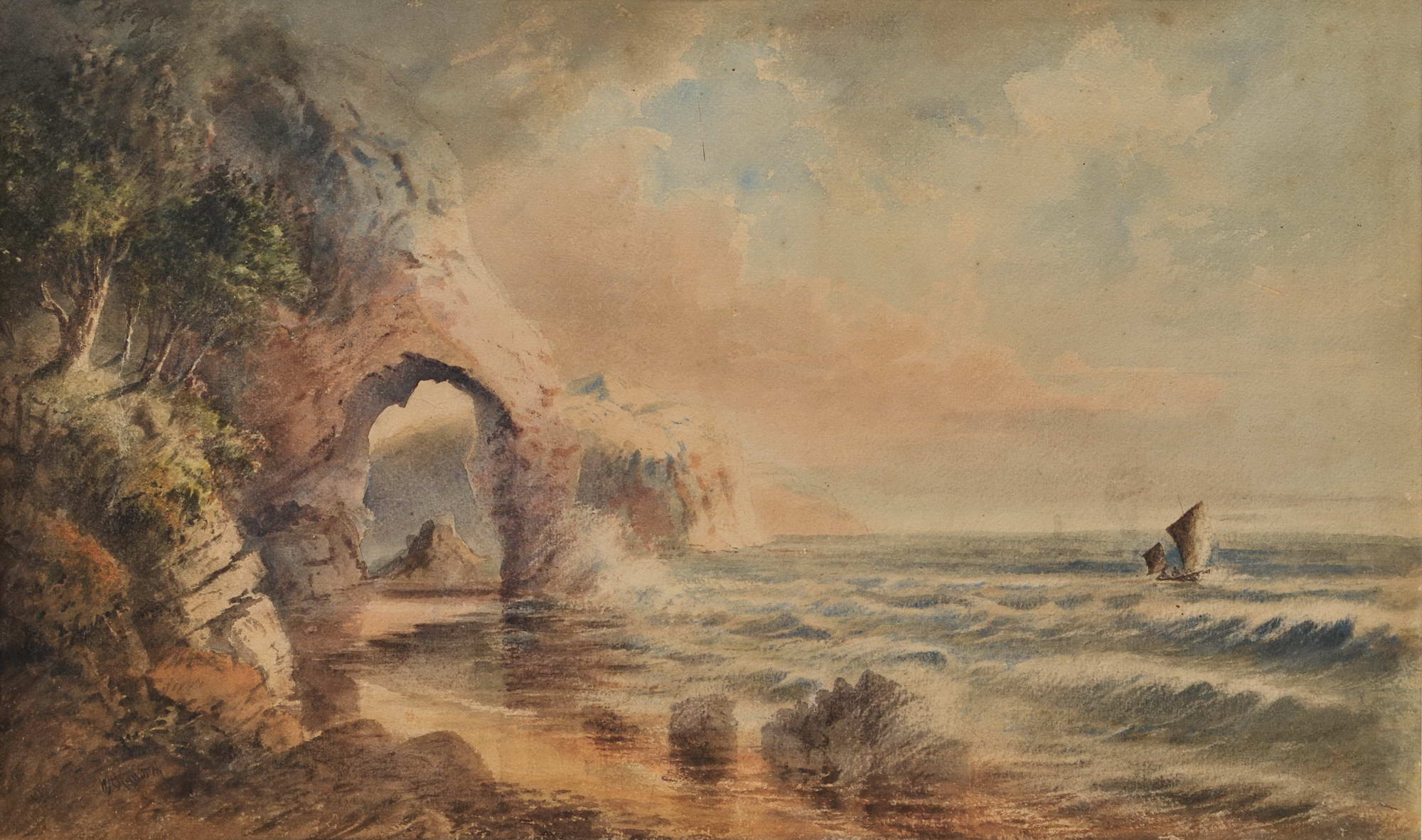
W.H. Raworth (Brit./Aust./NZ, c1821-1904). St Michael’s Arch, NSW [Avalon] c1860s. Watercolour, signed lower left, obscured title in colour pencil verso, 34.2 x 56.5cm. Tear to left portion of image, slight scuffs and foxing to upper portion. Price (AUD): $2,900.00 at:https://www.joseflebovicgallery.com/pages/books/CL181-53/w-h-raworth-c-brit-aust-nz/st-michaels-arch-nsw-avalon
Baranjuee, the south head at Broken Bay, is also the eastern head of Pittwater. It is a small peninsula of tall cliffs connected by an isthmus of low and tolerably fertile land with the hilly county which separates Pittwater from the sea. Pittwater is not unlike Port Jackson in its general features, and extends for about ten miles to the southward, branching off into a number of picturesque bays and coves. There are few habitations on the banks of this estuary, these few are situated near its head. Several small houses may be seen, which have been inhabited by men employed in the production of Lime but which have been abandoned in consequence of the supply of shells having become exhausted. Near the head there is s small island, which contains a number of fruit-bearing peach trees, the remains of former cultivation.
Under the headland of Baranjueo on its landward side, just at the entrance of Pittwater, is the Custom-house station. The site has been admirably chosen for this purpose. The heads around protect the station from tempestuous weather and furnish look-out posts for the officer and his men, from whence a view is commanded of all the surrounding land and water, that no vessel can pass in that vicinity without their seeing it. The station has a picturesque appearance from the water, and a closer approach does not, as in many instances, diminish its attractions.
A very good garden has been formed in the rear, but owing to the rocky nature of the soil, this must have been a work of great labour and perseverance. Fresh water however, is unfortunately rather scarce. It is obtained from the high rocky land above the station, and conveyed to the houses by meanz of troughs made of the cabbage-tree. At the present time, owing to the long continued drought, and to the great heat of the weather, there is no flow of water along the troughs during the day, but during the night sufficient water runs down to supply the station. Mr. Collyer, the gentleman who at present commands at this place, has acquired a well-merited popularity throughout the settlements around. In the performance of his duties he is indefatigable, and having succeeded in putting down the smuggling trade and other irregularities which went on formerly pursued to a great extent in this quarter, he has, of course, annoyed some of the inferior class of settlers, but his exertions are beneficial to the many, and to the coast traders he often renders most valuable assistance. A few weeks only have elapsed since a vessel was driven ashore near Mount Elliott, which would have become a total wreck but for the prompt and able assistance of Mr. Collyer and his men, by whom she was got off before she sustained any material injury. There are five men attached to the station. The coxswain, well-known among the settlers and the coasting traders by the familiar name of Larry, is a fine smart seaman, well acquainted with the surrounding waters. On the occasion just referred to he was particularly active.
At present there is but one regular trader to Pittwater, which is run by a Mr. Anderson, who lives two or three miles above the custom house station, on the western shore of the estuary. The only traffic, we believe, is in shells, the produce of the Pittwater settlers being conveyed overland to North Harbour, and from thence in boat to Sydney. To Brisbane Water and the Hawkesbury, however, there is an extensive bade is agricultural produce and timber.. The their trade has fallen off a good deal, in consequence of the very low price at present given for the shells by the Sydney lime-burners, but many of the smaller coasters are still engaged in it. About Pittwater there is no great deal to be done in the way of shooting or fishing, but Brisbane Water and the Hawkesbury present great attractions in this way. there is a singular blunder in this respect in Wells' Gazetteer. He speaks of Baranjuee as the residence of one or two old fishermen, who supply the Hawkesbury as far as it is navigable. Now, there is no one living at Baranjuee but the Custom-house officer and his crew, and as for marketable fish, they are in that vicinity rather scarce, owing to the shallowness of the water, and perhaps also to the immense number of sharks which traverse it. The number and voracity of these monsters is almost incredible. They will run into the shallowest water in search of prey, and to bathe even in water knee deep is therefore dangerous in the extreme. The Hawkesbury, on the contrary, abounds with fish of every description. It is here and on the north side of Broken Bay that the lobsters which are sent to Sydney are for the most part procured. They are taken generally during the night, and are kept in a sort of pen erected in shallow water, until an opportunity occurs of sending them to market. The most remarkable object in Broken Bay is a small .rocky island called Mount Elliott. The cliffs are a great height, and are the residence of an extensive colony of goats, the progeny of a few individuals which were placed there to feed in times gone by. There is no water here beyond what lodges in the hollows after rain, but the hairy settlers on the island find sufficient aqueous nourishment in the moistened herbage. The scenery both of Brisbane Water and of the Hawkesbury is beautifully picturesque. The latter is pre-eminently so. In the course of the hundred and twenty miles of navigable river between Broken Bay and the town of Windsor, there is every -variety of scenery. The overhanging rock, the man-grove swamp, the bank clothed with willow and casuarina, the grassy slope, the field of waving corn, and the cheerful orchard. Sometimes the river winds amidst groups of cottages and mansions; at others, its banks exhibit the most wild and romantic features. The Hawkesbury and its tributaries water an immense tract of country some of these tributaries are navigable to a considerable distance. The map of Cumberland attached to Wells' Gazetteer makes up, in its minute correctness as to the course of the Hawkesbury for the trifling blunder committed in the text as to the settlement and trade of Baranjuee, and may be depended upon as a guide by persons navigating these waters. Settlers at Brisbane Water occasionally walk to Sydney, but the journey is a toilsome one. By getting to the head of Pittwater, the distance is diminished to about twenty-two miles ; but the route is an awkward one for a person unaccustomed to bush travelling, there being no other guide than cart tracks, which are very apt to mislead, as there are routes to be avoided, both to the right hand and the left. Old bushmen will tell you that it is impossible to miss the road; but you will find it exceedingly possible to do so when you come to a spot where three or four tracks diverge in various directions. It is better, if possible, to have a companion who has crossed the country before. The journey is an interesting one. On the road there is some pretty scenery; and in several places there are splendid views of the ocean. Two lakes (or lagoons, as they are here called) are passed on the road; the largest of which, Narrabeen, is several square miles in extent, and has many small islands on its surface. It is for the most part shallow, and abounds with fish, which might be taken with the greatest ease, as a net could be hauled through any part of it. at present it is separated from the ocean by a barren sandy neck; but after floods this is covered, and the traveller is obliged to wade through the water for a considerable distance.
Between Pittwater and Middle Harbour there are several settlers residing at intervals of a few miles, who are very hospitable to passing travellers and will readily put them on their way. At Middle Harbour there is a ferry, kept by a person named Hillary. The place to which passengers are ordinarily taken is a point immediately opposite Hillary's residence; but any person who has walked from Pittwater will find it decidedly to his advantage to land gat the Willoughby Falls. For this purpose he will, for a few pence extra, be conveyed some two or three miles up of the most picturesque arms of Middle Harbour, and will save three or four miles of very bad road, From the falls there is an undeviating path, by which either of the steam ferries on the North Shore can be reached in half an hour by a smart walker. METEOROLOGY. (1850, January 30). The Sydney Morning Herald (NSW : 1842 - 1954), , p. 2. Retrieved from http://nla.gov.au/nla.news-article12915324
NOTICE-All Cattle and Horses found trespassing on the lands of Barranjoey, Broken Bay, will be either impounded or the owners thereof sued for such trespasses. RICHARD WILLIAMS. Advertising (1851, May 6). The Sydney Morning Herald (NSW : 1842 - 1954), p. 3. Retrieved from http://nla.gov.au/nla.news-article12926850
The Customs Station Coast Waiter then became, in January 1854, Mr. Alexander T Ross.
Improvements to dilapidated customs structures and construction of extra buildings, water tanks and the stone wharf began from 1860. The Customs Station Coast Waiter then became, in January 1854 Mr. Alexander T Ross. The grounds and buildings, well tended, were singled out for praise more then a few times by visitors.
The Australian National Archives holds a plan for the residence from 1862:
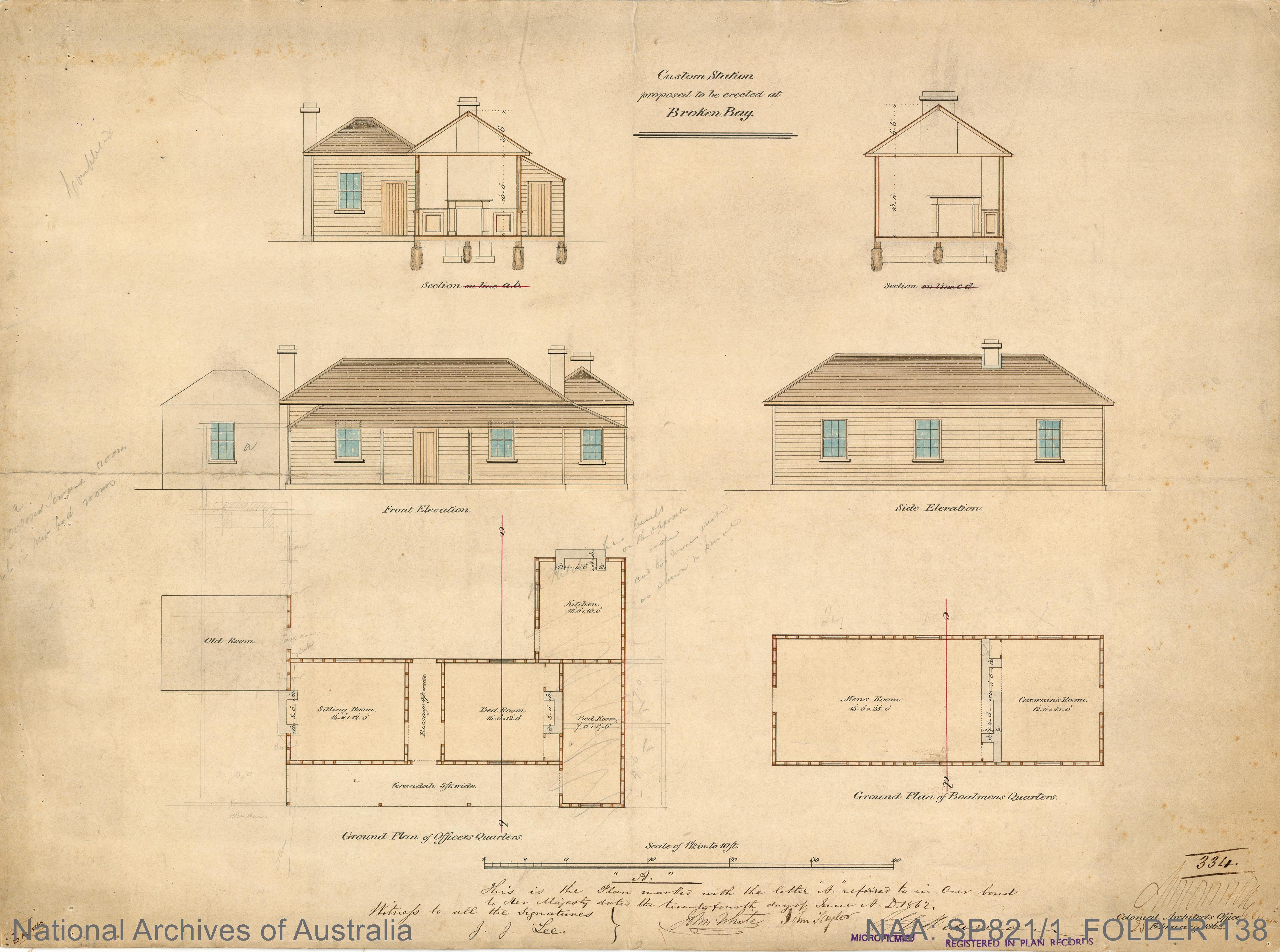
The grounds and buildings, well tended, were singled out for praise by visitors. From A Ride to Barranjoey, Sydney Morning Herald 1867:
Just under Barranjoey is the pretty cottage of the Customs officer, Mr Ross and the residences of those connected with the Customs station. There is evidence of taste in the gardens and the other cultivated ground around the station, and an air of peaceful comfort quite refreshing to those engaged in the turmoil of city life. From the station to the flagstaff on the top of the mount, the ascent is by a pretty walk, which must have taken to make and on either side are various shrubs so planted as to throw an acceptable shade over the road. The view from here is a fitting climax to those on the journey down -to the south-west is a harbour that would hold the fleets of Great Britain, to the west the mouth of the Hawkesbury, to the north Pyramid Island and the entrance to Brisbane Water, and the innumerable inlets that dent the land stretching far into the sea and forming the South Head of Broken Bay, and on the east the unbroken curve of the Pacific. The Ross's house had a pretty rustic appearance with its neatly painted front, and leaf covered verandah, but, as he informed me, the beauty was all in appearance, since the house, a timber erection, had been built so many years ago, that slabs and posts and weatherboards were now so far decayed as to make it doubtful on the occasion of every gale of wind, whether it would stand it out, or succumb before the blast. However, by dint of constant painting and repairing, it is kept in an apparently comfortable state, despite the rottenness that lurks below the surface, and what is worse, the leakage from the roof above. In front of the house is a small, but well kept garden, on a terrace, built up on the side of the hill evidently after a considerable amount of labour, and overlooking from the farther side the men's hut and the beach beyond. From the side of the house, a wicket gate opens upon a broad pathway leading down to the beach, formed into broad low steps, by means of protecting logs, behind which gravel and stones have been laid just sufficiently off the level to secure drainage. The men's hut is a large slab house with a shingle roof admitting wind and rain everywhere, since the lower ends of the slabs have completely rotted away, and they rock away crazily in the wind in all the helplessness of extreme old age; whilst the boat's crew have their slumbers protected from the pelting rain that would otherwise penetrate the leaky rotten roof, only by the large tarpaulin, or sail, or whatever it is, that is thrown over it. A large boathouse, under which was stored the new and crack boat of the station, stands to the right of the men's hut, with a workshop, in which was a very good and complete supply of tools, attached to it; and at the back, under a shed or lean-to, a little punt, sufficient to accommodate three or four persons, was in course of construction, for use on fishing expeditions.
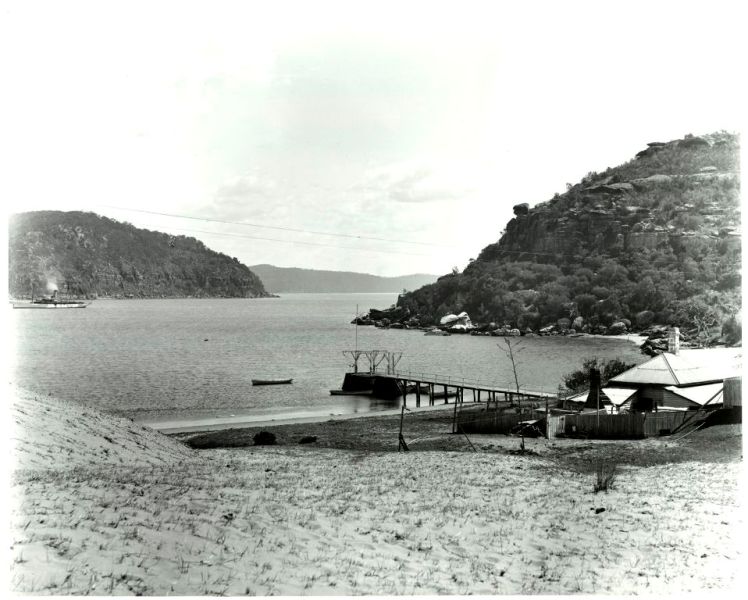
Running out from the beach immediately in front of these is a long and well constructed jetty, built on piles, and carried into good deep water at the lowest tides. At the back of the cottage we were shown, with evident pride, the arrangements that had been made for supplying the station with water. These were effected by bringing the water of a beautifully clear and crystal spring, by means of long troughs from a dank, rocky gully in the mountain's side, whence it took its source, down to the bask of the premises, and within easy reach of the domestics. This stream, which has never been known to fail, even in the dryest season, is said to be deliciously cold and refreshing…
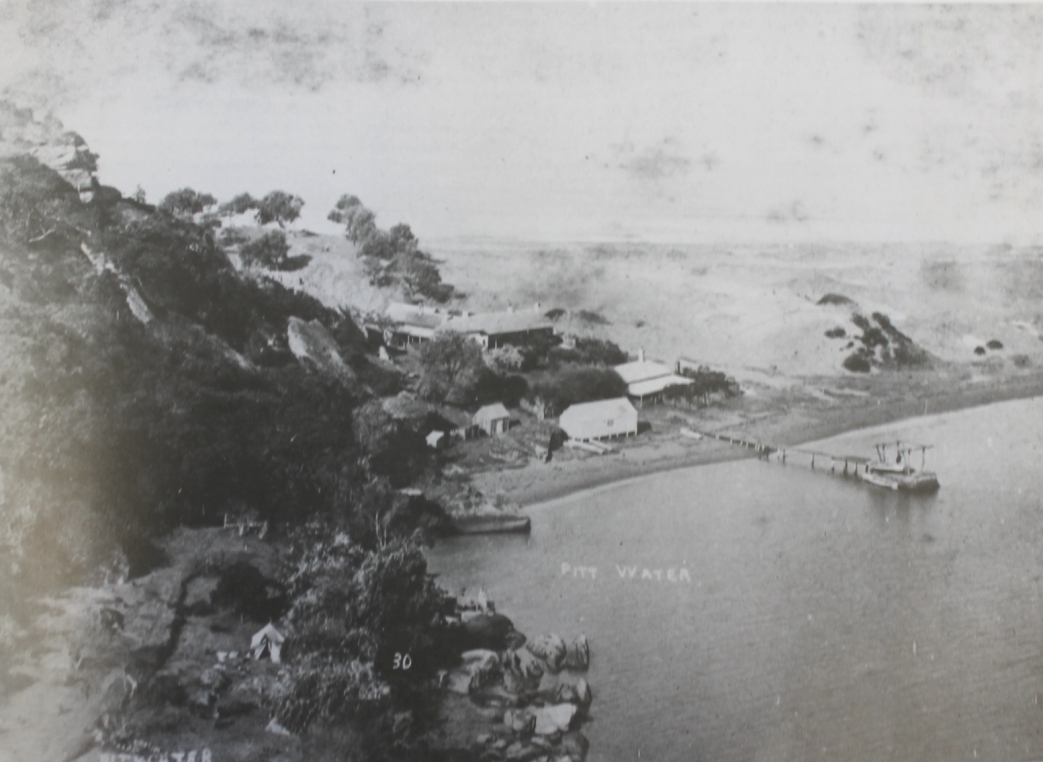

The Ross's house had a pretty rustic appearance with its neatly painted front, and leaf covered verandah, but, as he informed me, the beauty was all in appearance, since the house, a timber erection, had been built so many years ago, that slabs and posts and weatherboards were now so far decayed as to make it doubtful on the occasion of every gale of wind, whether it would stand it out, or succumb before the blast. However, by dint of constant painting and repairing, it is kept in an apparently comfortable state, despite the rottenness that lurks below the surface, and what is worse, the leakage from the roof above. In front of the house is a small, but well kept garden, on a terrace, built up on the side of the hill evidently after a considerable amount of labour, and overlooking from the farther side the men's hut and the beach beyond. From the side of the house, a wicket gate opens upon a broad pathway leading down to the beach, formed into broad low steps, by means of protecting logs, behind which gravel and stones have been laid just sufficiently off the level to secure drainage. The men's hut is a large slab house with a shingle roof admitting wind and rain everywhere, since the lower ends of the slabs have completely rotted away, and they rock away crazily in the wind in all the helplessness of extreme old age; whilst the boat's crew have their slumbers protected from the pelting rain that would otherwise penetrate the leaky rotten roof, only by the large tarpaulin, or sail, or whatever it is, that is thrown over it. A large boathouse, under which was stored the new and crack boat of the station, stands to the right of the men's hut, with a workshop, in which was a very good and complete supply of tools, attached to it; and at the back, under a shed or lean-to, a little punt, sufficient to accommodate three or four persons, was in course of construction, for use on fishing expeditions.
Running out from the beach immediately in front of these is a long and well constructed jetty, built on piles, and carried into good deep water at the lowest tides. At the back of the cottage we were shown, with evident pride, the arrangements that had been made for supplying the station with water. These were effected by bringing the water of a beautifully clear and crystal spring, by means of long troughs from a dank, rocky gully in the mountain's side, whence it took its source, down to the bask of the premises, and within easy reach of the domestics. This stream, which has never been known to fail, even in the dryest season, is said to be deliciously cold and refreshing…
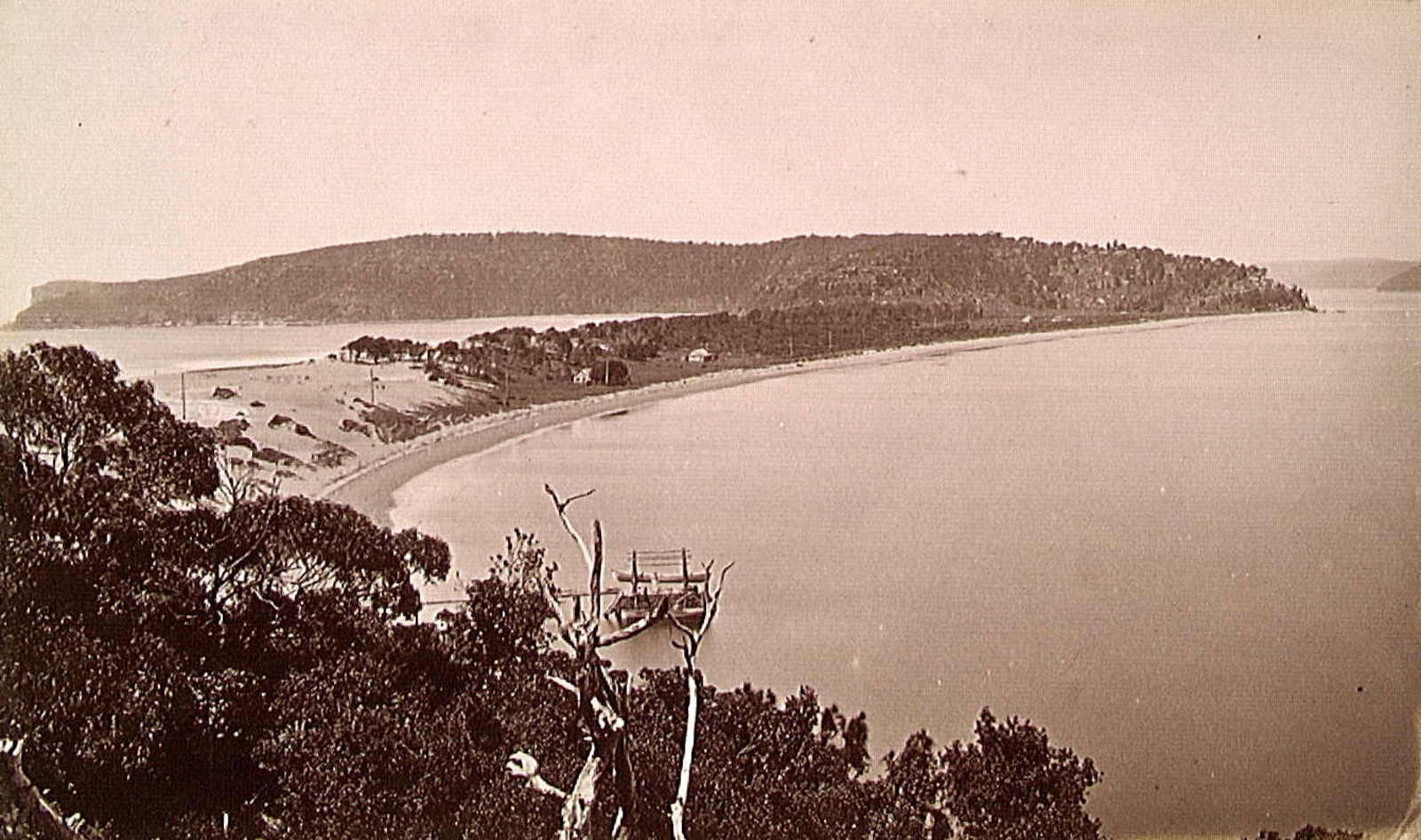
Broken Bay. Date(s) of creation:1889. Charles Potter 1879-89. Image No: mp000367. Courtesy State Library of Victoria
Records researched indicate ship dilemmas on an almost weekly basis around Barrenjoey and waters further south and north. In these incidents the customs Officers at Barrenjoey appear again and again as those who have saved lives. Albert Thomas Black, who commenced duties at Broken Bay Customs Station in 1868 soon after his marriage to Kate Margaret Mulligan on March 21st, appears again and again in these rescues. One example:
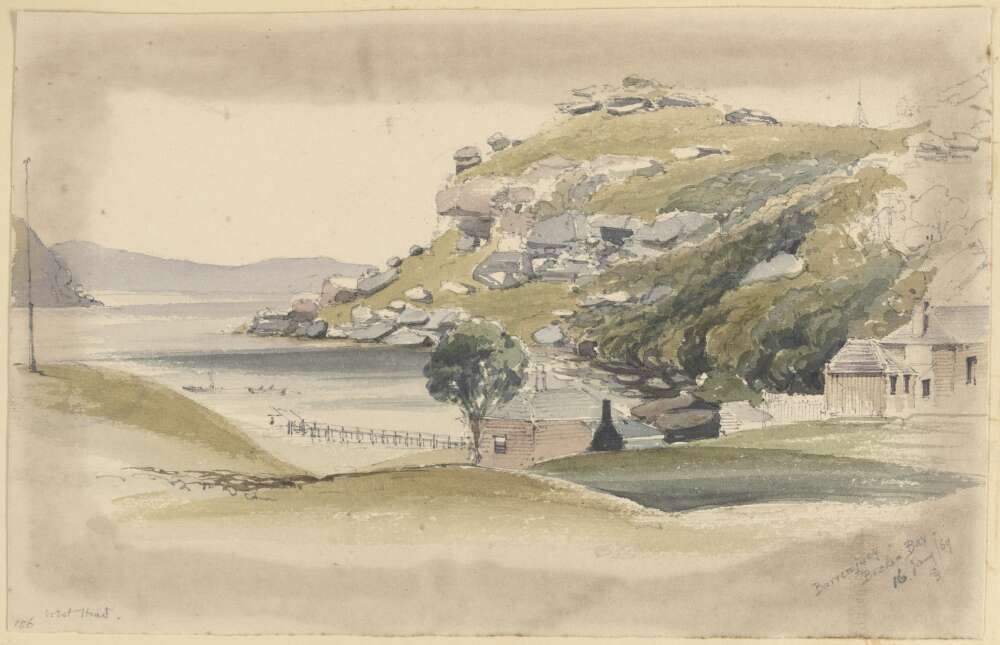
Barrenjuey [i.e. Barrenjoey], Broken Bay 1869 Jan. 16 by George Penkivil Slade. nla.pic-an6454687, courtesy National Library of Australia.
FATAL OCCURRENCE AT BARRANJUIE, BROKEN BAY.
ON Boxing-day, Mr. George Smith, J.P., of Manly, held at Barranjuie a magisterial enquiry into the cause of death of a man named Henry Tucker. The following evidence was taken :-Francis Smith deposed that he was a gentle-man living at Balmain; on the morning of Saturday, the 23rd instant, he started from his wharf in company of John Walker, George Williams, and deceased Henry Tucker, in an open sailing-boat of about three tons, the ketch Ada to proceed to Broken Bay on a pleasure; trip ; a southerly wind was blowing at the time, which fell light after they-got outside the Sydney Heads ; about 12 o'clock the wind came round to the north-east, so they tacked about till about 6 p.m., when he found himself about two miles to the north of Long Reef, and about eight miles from the land; witness then started their course for the North Head of Broken Bay, which he passed at a distance of about two miles; the breeze freshening, and night coming on, he ordered a sharp look-out to be kept for the lights on Barranjuie, which were not visible; the time, as nearly as he could calculate, was then about 7 o'clock; it having set in night they continued a northerly course, deciding upon making the nearest place for shelter; upon daylight appearing this proved to be a bay called Boat Harbour, about one mile south of Barrenjuie; when witness saw the light-house and flagstaff in the morning, he made sail for Broken Bay with a E.N.E. wind blowing ; he rounded Barranjuie Point about half-past 8 o'clock on Sunday morning, and anchored under the inner light-house; he remained for some time fishing, and then made for the inner (western)point of Barranjuie and anchored again ; the wind shortly afterwards freshened ; he rode the breeze out in this spot until he saw indications of a southerly wind, when he attempted to take up a safer position; he made sail, and began to tack up the bay, when their small boat at the stern broke away: he attempted to wear his own boat round to recover the small one, when she jibed and took in a considerable quantity of water; he then tried to run under the lee of the land, but before reaching it she gradually sank; witness made for the shore with George Williams, deceased and John Walker still clinging to some portion of the seats; after being in the water some twenty minutes, witness was picked up much exhausted by the captain and crew of the Weat Hartley No. 2 schooner and taken to the residence of Mr. A. T. Black, Collector of Customs, where, after much attention, he gradually recovered; he saw the body of deceased brought into the same room as himself, where every means were used to restore animation, but without success ; had he seen the lights on Barranjuie, his intention was to have entered the heads that night and made for the basin; had these lamps been alight he was sufficiently off the land not to shut them out from view, and he believed that the sad occurrence would have been avoided; deceased had been in his employ for about five months, and was a sober, steady man.
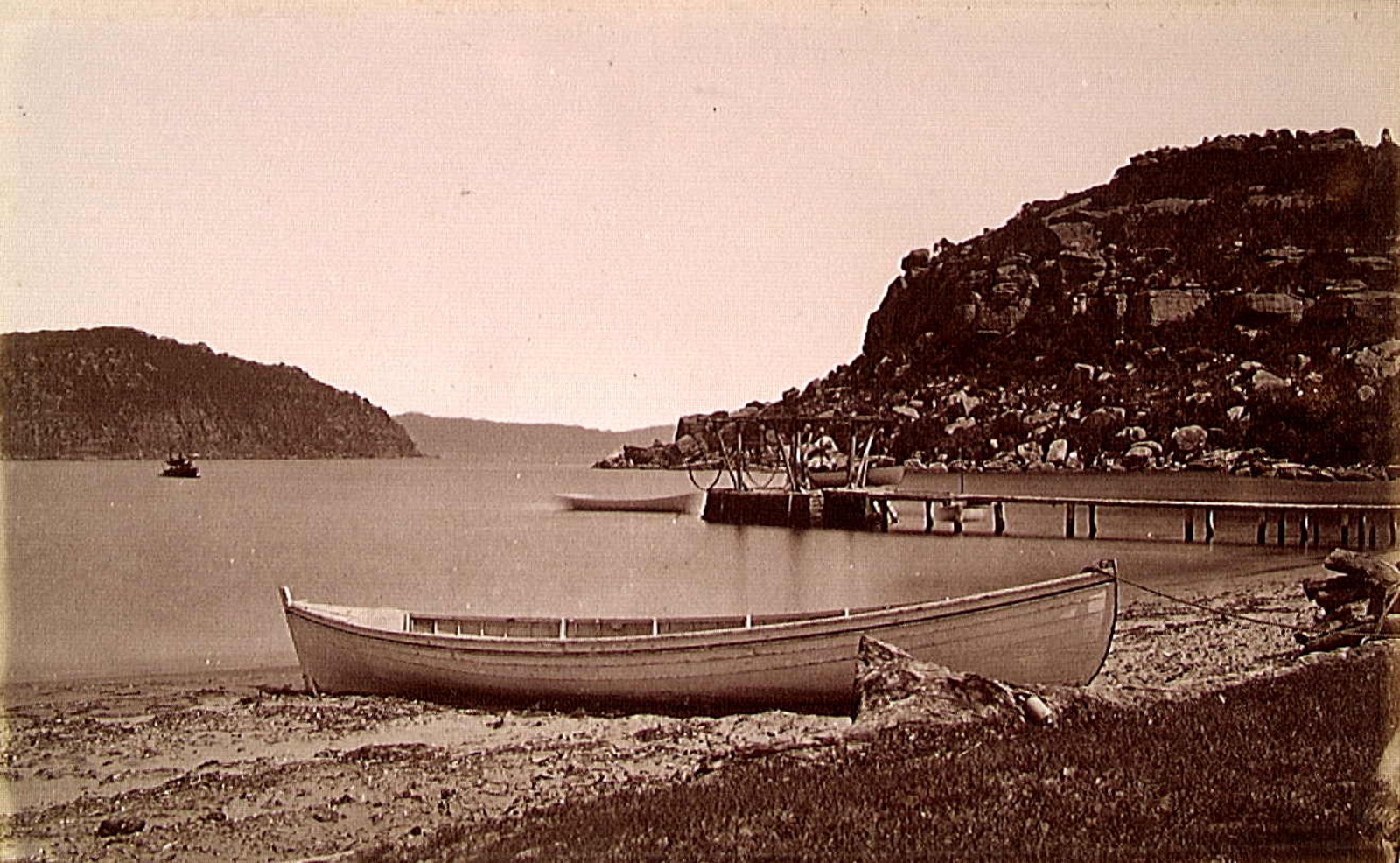
Broken Bay. Date(s) of creation:1889. by Charles Potter 1879-89. Image No:FL15796563. Courtesy State Library of Victoria
George Williams, residing at Richmond Villa, Domain, gave corroborative evidence ; had they seen the lights, their intention was to have gone into the bay, but not seeing them they stood in for the land as it was getting dark; witness was picked up, after the occurrence by Mr. A. T. Black, as was also deceased, who appeared to be dead. John Walker also gave corroborative testimony; he stated that on the boat setting down, deceased and witness went into the water together but seeing him paralysed, with fear, witness tried to encourage him by placing a piece of wood under his arms and cheering him up; he kept calling out for help, which further exhausted him, so that on assistance reaching them he believed life to be almost extinct; at the Custom House everything was done to restore animation.
Albert Thomas Black, Collector of Customs at Barranjuie, deposed to starting with his crew to the rescue of some men in a boat which he heard had upset; he rescued George Williams, John Walker, and deceased (whom he believed to be dead),and seeing that a boat was making for Francis Smith, and considering him safe to be picked up, he made for home; he tried for a couple of hours to restore life in Tucker, but failed; he desired to mention the heroic conduct of a lad named Jeremiah Connolly, who, of his own accord, put off in a small boat to save these drowning men. John Connolly, one of Mr. Black's crew, gave evidence as to the up-setting of the boat, which he witnessed from the shore. From the evidence adduced, Mr, Smith, gave it as his opinion that death had resulted from drowning. FATAL OCCURRENCE AT BARRANJUIE, BROKEN BAY. (1871, December 29). The Sydney Morning Herald (NSW : 1842 - 1954), p. 9. Retrieved from http://nla.gov.au/nla.news-article13250096
Albert Thomas Black, courtesy John Black, great grandson of A T Black.
THE LATE FATAL ACCIDENT IN BROKEN BAY
To ALBERT T. BLACK, Esq., Customs House Officer, Barranjuie.
Sir,- We hasten to avail ourselves of the first opportunity since our arrival in Sydney, publicly to return you and your courageous crew our sincere and heartfelt thanks for having, with the assistance of the Almighty, been the means of rescuing us from a watery grave on the above occasion. The fact of your having lowered and manned your boat and pulled a distance of over a mile in an almost incredibly short time during a gale of wind, and in a boisterous sea, reflects the greatest credit on you all – one minute's delay would have caused a further loss of life. Your courage was scarcely exceeded by your kindness in the careful attention bestowed by yourself and family onus when carried in an exhausted and almost dying state into your house, where our wants were carefully supplied, and all seemed to vie with each other in doing the utmost in their power to add to our comforts. Your sympathy and untiring exertions to restore animation to our unfortunate companion, although without success, deserve more praise than we can find words to convey, and reflect credit upon the Government for having men like yourselves in the service, who show by their actions that they are willing and prepared to risk their own lives to save their fellow -creatures. In conclusion we trust that your life may be long spared to your wife and family ; and we feel convinced that should a boat accident occur in Broken Bay whilst you are there life will not be lost, if in the power of man to save it. Having remained under your hospitable roof for nearly three days, we bid you a hearty farewell, and assure you that the name of Albert Thomas Black shall be engraven on our hearts as long as it pleases God to spare us.
We further desire to express our admiration of the heroic conduct of Master JEREMIAH CONNELLY, who nobly ventured out in a small boat with the object of rendering assistance, thereby showing his willingness, and incurring a great risk, to save life, if possible.
P.S.-We enclose a small remittance, which please divide among your crew as you think fit. '
Signed, FRANCIS SMITH, Peacock Point, Balmain. J. C. WALKER, Balmain. GEORGE A. WILLIAMS, Richmond Villa, Domain. THE LATE FATAL ACCIDENT IN BROKEN BAY. (1871, December 29). The Sydney Morning Herald (NSW : 1842 - 1954), p. 10. Retrieved from http://nla.gov.au/nla.news-article13249989
John Connelly, one of Mr Black's crew, experienced a fire and loss in April of that same year. Another 'report' points to what families living together and in semi-isolation can experience. Someone here had too much rum or too much sun, or both;
SUPPOSED INCENDIARISM AT BARRENJOEY.-Information was brought yesterday morning to the police, that a night or two since a person named Connolly, residing close to the Custom-house station at Barrenjoey, was alarmed by hearing crackling noise apparently on the roof of his house, and on going outside found the building in flames. Connolly had, during a series of years, got together a large and valuable collection of shells, valued some time back by a skilled conchologist at L200, and these were totally destroyed, as well as the main part of the house. An assumption that the lire was the work of an incendiary, is strengthened by tho fact that some persons at a distance saw some small flashes of flame before the fire broke out, and thinking the family had not gone to bed, made for the house, which was all in a blaze before they reached it. We believe that Mr. George Smith, J. P., of Manly, who usually attends to such matters, will be despatched by the Government to hold a magisterial inquiry into this very suspicious affair. GOVERNMENT GAZETTE. (1871, April 15). Empire (Sydney, NSW : 1850 - 1875), p. 3. Retrieved from http://nla.gov.au/nla.news-article60871107
THE CASES OF W. J. STEERE AND J. QUINN.-Two petitions were lately presented to the Legislative Assembly of a somewhat remarkable character, by two men employed in the Customs' boat at Broken Bay. The accusations and other statements are nearly in the same language, and are as follows, as given by Quinn in his petition:-" On the18th day of January, 1871, while on duty in the Broken Bay Customs' boat, on our way from Gosford to the station, your petitioner was unlawfully assaulted and forced down in the boat by Michael Madden and John Conolly, boatmen. The officer (Mr. A. T. Black) and those men were in a state of drunkenness. Madden was like a madman; he held a stretcher in his hand, as if about to strike me with it, accompanying it with a threat that he would knock my brains out, to that I considered my life to be in danger, and was compelled to jump overboard to save it. Your petitioner attributes the saving of his life to Mr. H. P. Palser, J,P., C. E. Jeannerette, manager of the Parramatta Steam Company, and Mr. Rock Davies, master-shipwright, of Brisbane Water, for they took all the stretchers they could got hold of, and threw them overboard, to prevent their being used about some one's head, and one of them assisted W. J. Steere (boatman) to pull the boat into shallow water. After I left the boat, Madden assaulted Steere, and to prevent being struck by Madden with the stretcher he (Steere) had to jump overboard. Messrs. H. P. Palser, C. E. Jeannerette, and R. Davies left, thinking it unsafe to go any further in the boat ; we had to wade over a hundred yards to get to the shore, through the water, and we left the other two boatmen (Connelly and Madden) and Mr. Black, the officer, quarrelling and fighting among themselves in the boat. Your petitioner and the above named gentlemen, and W. J. Steere, boatman, walked to Mr. Davies's place, and Mr. Davies kindly lent your petitioner and Steere a small boat, and we started for the station ; and we had to go across Brisbane Bar in this small boat, and arrived there about half-past 9 o'clock the same night. Your petitioner was discharged on the 9th day of February,1872, without any fault of his own ; and the case having been taken out of the Collector's hand your petitioner could not get an investigation into his case." ADELAIDE. (1873, February 28). The Sydney Morning Herald(NSW : 1842 - 1954), p. 5. Retrieved from http://nla.gov.au/nla.news-article13320475
TO THE EDITOR OF THE HERALD.
Sir,-A paragraph appears in your issue of 28th ultimo, containing the substances of petitions lately presented to the Assembly by two men formerly in the Government service, Customs branch, Broken Bay. As the petition contains statements which reflect upon my character, not only privately, but as a Government official, I beg that you will give insertion to this letter, in which I emphatically and distinctly deny the statements contained in the petitions. These misrepresentations, to call them by no other name, made by these men, were investigated sixteen months ago, and I was honourably exonerated from all blame by the Government. ALBERT T. BLACK. H. M. Customs, Broken Bay, March 10, 1873. TO THE EDITOR OF THE HERALD. (1873, March 13). The Sydney Morning Herald (NSW : 1842 - 1954), p. 3. Retrieved from http://nla.gov.au/nla.news-article13308942
If Charles Jeanerette did testify against Mr Black it did not stop the two from being best of friends and entertaining the official party at the laying of the foundations for the lighthouse or Mr Black joing Jeanerette when he hosted other dignitaries in trips up the Hawkesbury river.
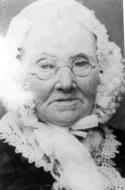 Another note of ambiguity is struck with this appointment, despite an attested record of undertaking duties all around Pittwater, due to Albert T Black being the grandson of the deceased privateer (state-sanctioned pirate) and ship's officer Captain John Black and Mary Lord (nee Hyde) one of the colony's richest women by the time of her passing. To his title of Coast Waiter, (a customs house officer who superintends the landing or shipping of goods for the coast trade) Mr Black became a correspondent by telegraph for the Sydney Morning Herald on coasters, schooners and other vessels sheltering in Pittwater, as well as the Telegraph Officer, the Post Master when a Post Office was opened, superintendant of the Barrenjoey school (1872) in the boatman's cottage and;
Another note of ambiguity is struck with this appointment, despite an attested record of undertaking duties all around Pittwater, due to Albert T Black being the grandson of the deceased privateer (state-sanctioned pirate) and ship's officer Captain John Black and Mary Lord (nee Hyde) one of the colony's richest women by the time of her passing. To his title of Coast Waiter, (a customs house officer who superintends the landing or shipping of goods for the coast trade) Mr Black became a correspondent by telegraph for the Sydney Morning Herald on coasters, schooners and other vessels sheltering in Pittwater, as well as the Telegraph Officer, the Post Master when a Post Office was opened, superintendant of the Barrenjoey school (1872) in the boatman's cottage and;
Government Gazette. FRIDAY, AUGUST 9. APPOINTMENTS,-Mr. A. T. Black, Customs' Officer at Broken Bay. to act as Inspector of Distilleries for the district of Brisbane Water; Government Gazette. (1878, August 17). Australian Town and Country Journal (NSW : 1870 - 1907), p. 41. Retrieved from http://nla.gov.au/nla.news-article70594021
APPOINTMENTS.-Mr. Albert Thomas Black, Officer of the Customs at Broken Bay, to be an Acting Assistant Inspector of Fisheries GOVERNMENT GAZETTE. (1883, July 4). The Sydney Morning Herald (NSW : 1842 - 1954), p. 5. Retrieved from http://nla.gov.au/nla.news-article28375709
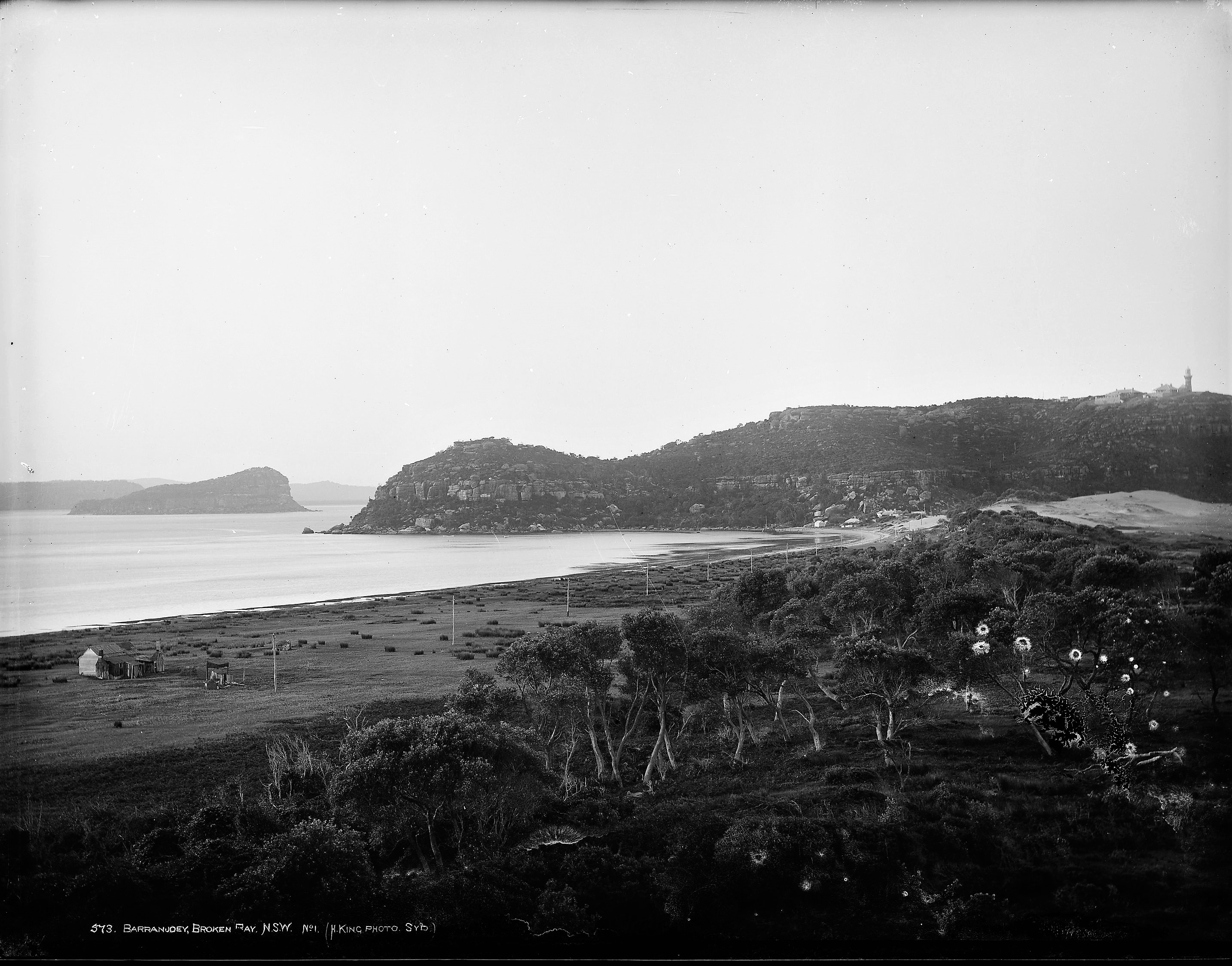
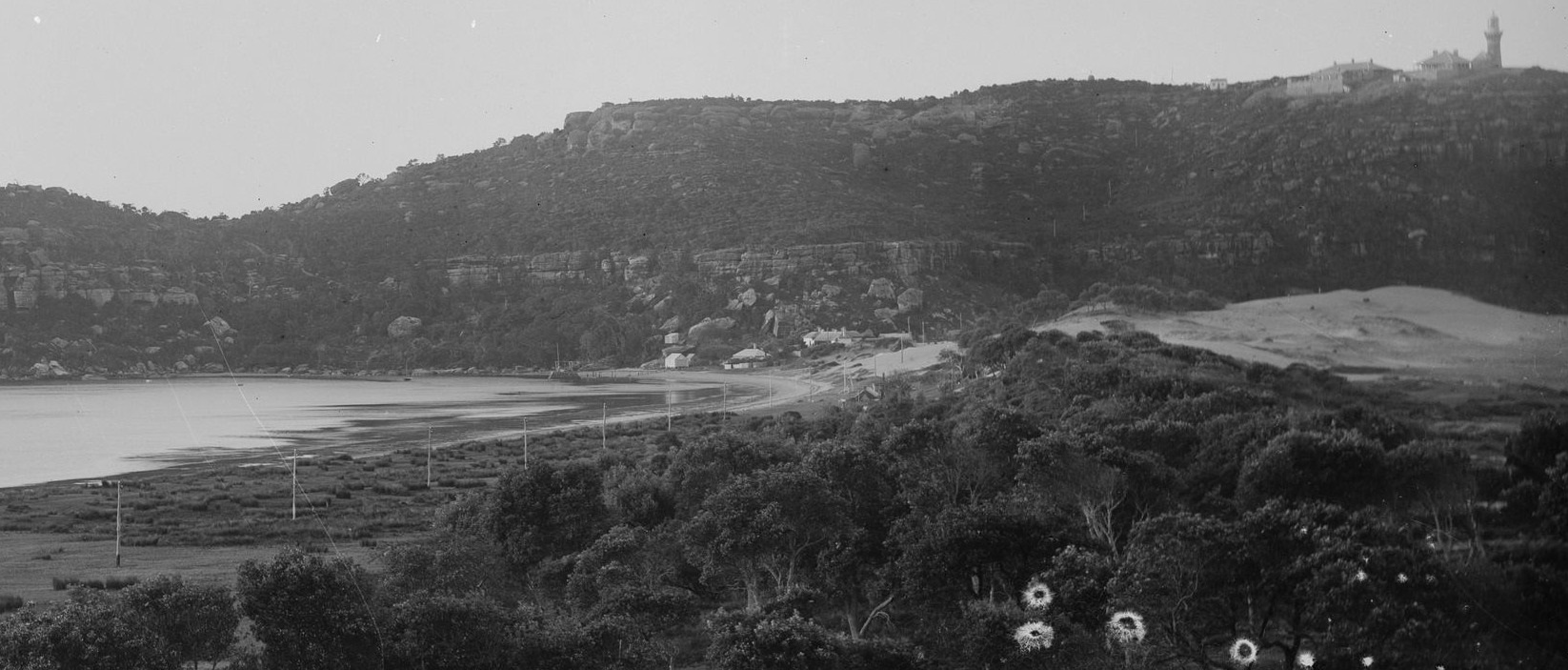
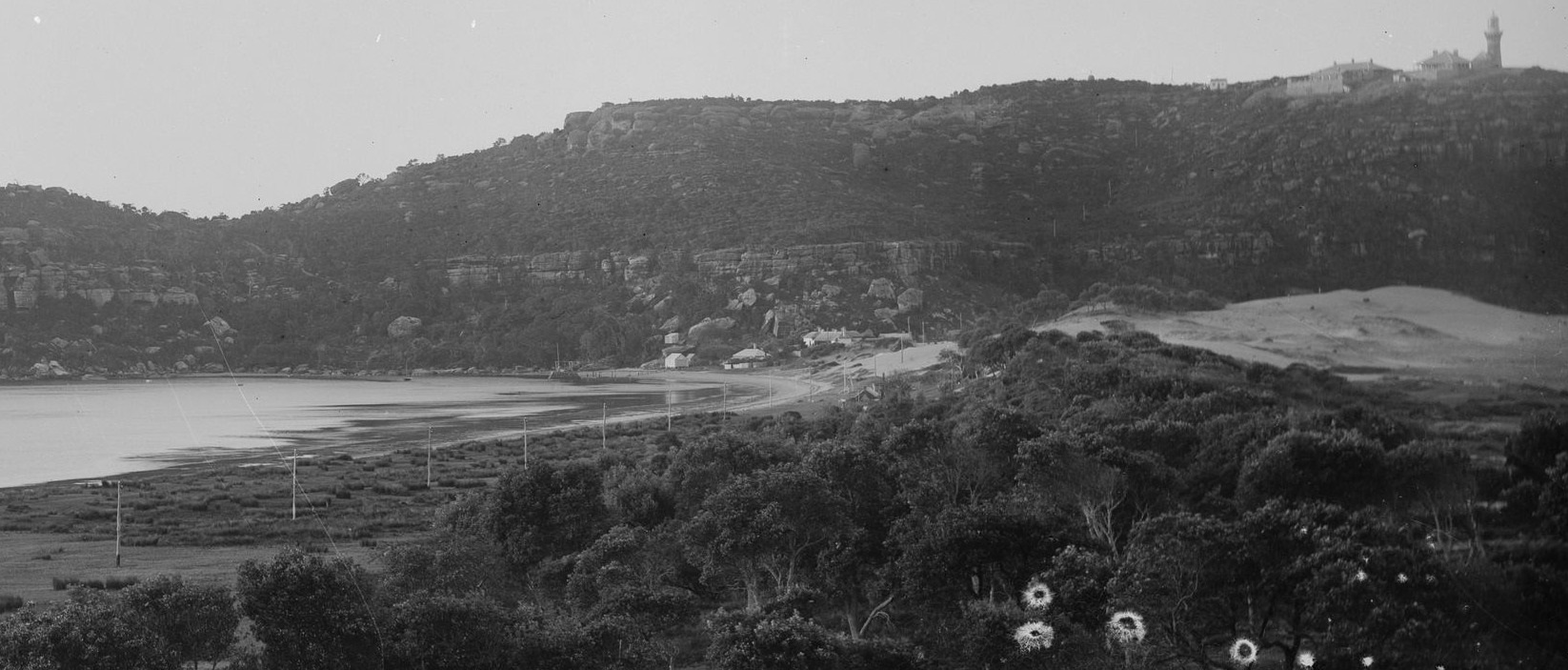
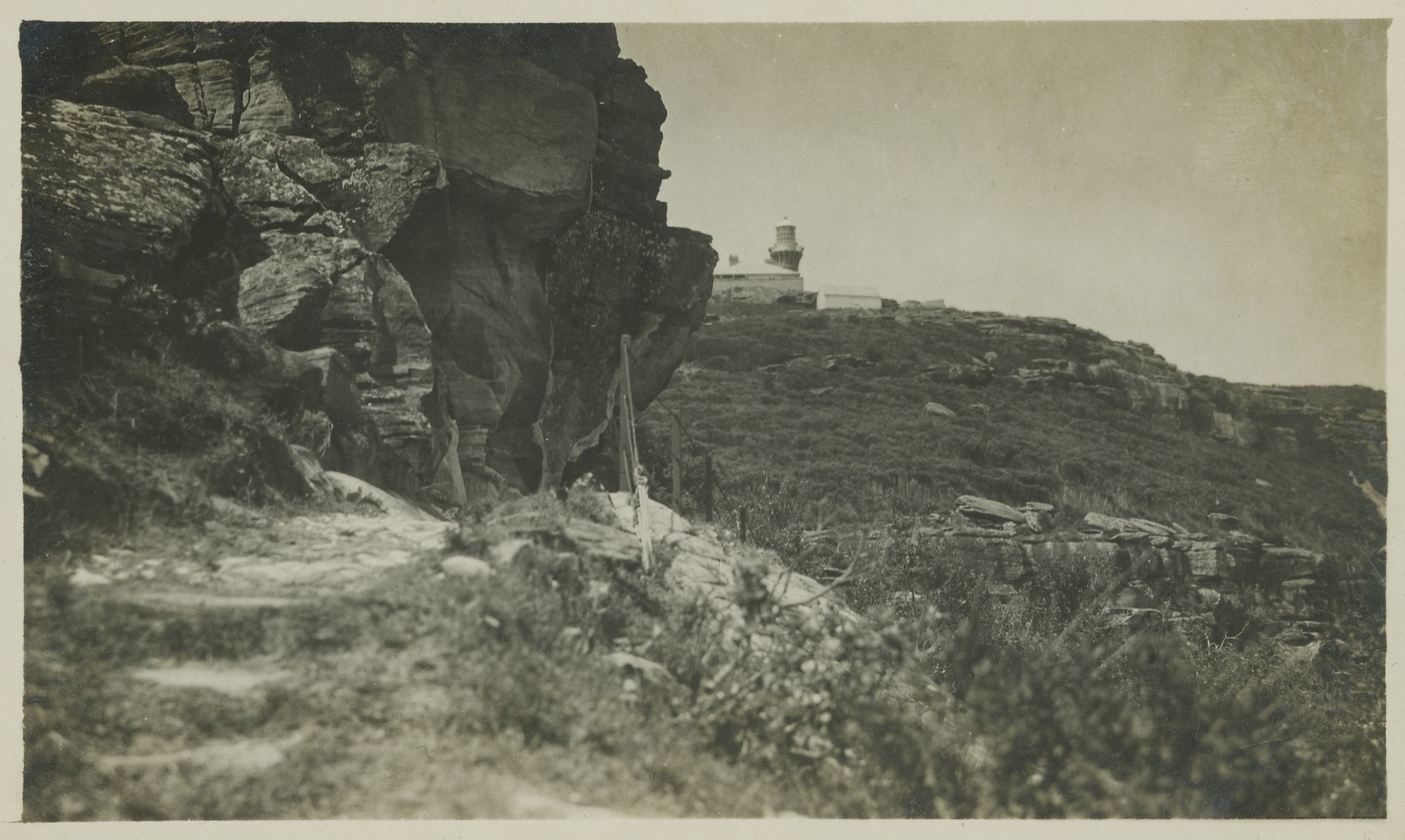
Barren Joey Lighthouse (Burrin Ju) [picture]. A. J. Vogan (Arthur James), 1859-1948,[ca. 1910 - ca. 1915] Image H82.254/8/34, courtesy State Library of Victoria.
Mr Black, like many of the Customs Officers stationed at Barrenjoey, saw all of his four sons and two daughters born at Barrenjoey:
BLACK—January 3rd, at the Customs Station, Broken Bay, the wife of Albert T. Black, of a son. Family Notices. (1869, January 29). The Sydney Morning Herald (NSW : 1842 - 1954), p. 8. Retrieved from http://nla.gov.au/nla.news-article13180619
BLACK—November 27, at Barrenjoey, Broken Bay, the wife of Albert T. Black, of a daughter. Family Notices. (1870, December 2). The Sydney Morning Herald (NSW : 1842 - 1954), p. 8. Retrieved from http://nla.gov.au/nla.news-article13214188
BLACK—January 16, at Barrenjoey, Mrs. Albert T. Black, of a son. Family Notices. (1874, February 13). The Sydney Morning Herald (NSW : 1842 - 1954), p. 8. Retrieved from http://nla.gov.au/nla.news-article13331540
BLACK—June 24, Broken Bay, Mrs. A. T. Black, of a daughter. Family Notices. (1875, July 9). The Sydney Morning Herald(NSW : 1842 - 1954), p. 8. Retrieved from http://nla.gov.au/nla.news-article13356799
Mr Black passed away in August 22nd, 1890, at only fifty years of age, at his then home at Woollahra. His wife, Kate, did not leave the Customs Station until February 24th 1891, continuing her duties as postmistress during this time. Mark Thomas Cohen was stationed at the Customs Office until August 1891 when Captain W H Champion and his family then took over the duties.
Captain William Henry Champion was then the head Customs Officer from 1891-1903, his wife and ten year old daughter sharing the 'postmistress' duties. During this time the Custms Waiters house was improved and a new boatshed built:
Drawings dated February 25th 1898:


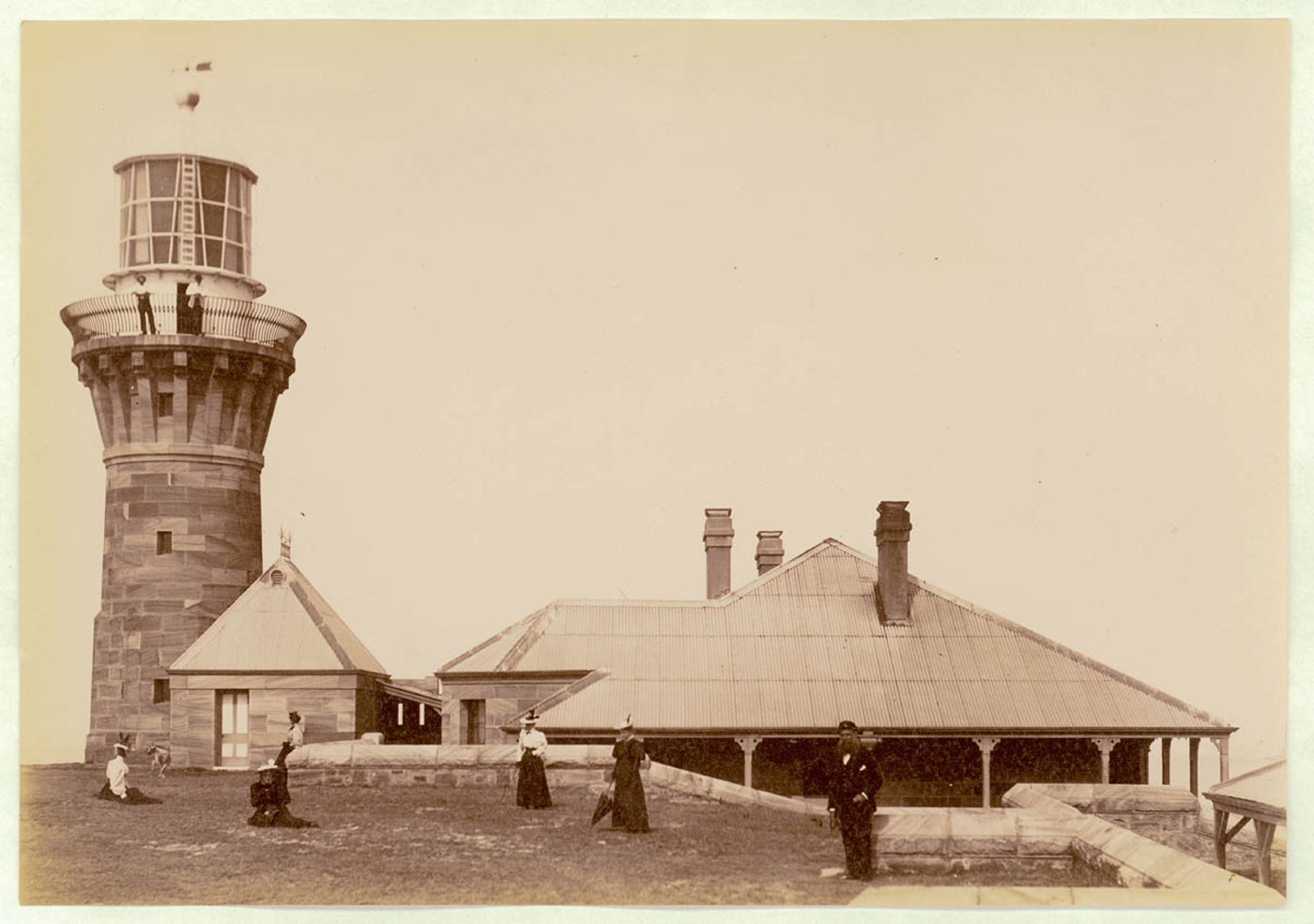
Barrenjoey Lighthouse, ca. 1900-1910, Image No: a116418, courtesy State Library of NSW; Mona Vale Library copy of this image states this is circa 1890 and Captain William Champion is gentleman with the hat on to right of this sepia photo.

Coast Waiters residence on Station Beach circa 1900
His wife, through Duguld Thomson, MP, was appointed to Pymble Post office on the Captains retirement in 1903.
CHAMPION. —March 10, 1906, at Royal Prince Alfred Hospital, Captain William Henry Champion, late of Barrenjoey, Broken Bay, aged 71 years. Family Notices. (1906, March 12). The Sydney Morning Herald(NSW : 1842 - 1954), p. 6. Retrieved from http://nla.gov.au/nla.news-article147582
CHAMPION.-August 28, 1914, at the residence, Post office, Pymble, Eva Aldena (late Postmistress), widow of the late Captain W. H. Champion, H.M. Customs, Barranjoey, Broken Bay, and dearly beloved mother of Queenie and Nathalie Champion. At rest. Interment at Gordon Cemetery, Saturday, 29th, 11.30 a.m. Family Notices. (1914, August 29). The Sydney Morning Herald (NSW : 1842 - 1954), p. 12. Retrieved , from http://nla.gov.au/nla.news-article15533371
Further threads point to a Hawkesbury river association in Mr Frank Eckman, another Customs Station Officer of this last period. He married the daughter of a renowned captain. The Eckman's also lost a loved one at Barrenjoey;
ECKMAN. May 16, 1943, at her residence, 117 Douglas Street, Stockton, Newcastle, Frances Phelemina Eckman, daughter of the late Captain Peter and Sarah Melvey and beloved wife of the late Frank Eckman(late of the Customs), and mother of Melvey, Willie, Ernest, Ada, Zita, and Frank, aged 83 years. R.I.P. Family Notices. (1943, May 17). The Sydney Morning Herald(NSW : 1842 - 1954), p. 8. Retrieved April 4, 2013, from http://nla.gov.au/nla.news-article17848742
ECKMAN.On Monday, March 16, John Joseph, the youngest dearly beloved son of Frank and Frances Eckman, and grandson of Peter and Sarah Melvey, Hawkesbury River, accidentally drowned at Barrenjoey, aged 18 months. Family Notices. (1891, March 20). The Sydney Morning Herald(NSW : 1842 - 1954), p. 1. Retrieved from http://nla.gov.au/nla.news-article13818120
ECKMAN. —October 28, at his son-in-law's residence, 29 Douglas-street, Stockton, Frank Eckman, late of Customs, Barranjoey and Newcastle, dearly loved husband of Frances Eckman, and father of Melvey, William, Ernest, Frank, Ada and Zita, and son-in-law of the late Captain Melvey, of North Sydney, aged 72 years. Family Notices. (1925, October 30). The Sydney Morning Herald (NSW : 1842 - 1954), p. 10. Retrieved from http://nla.gov.au/nla.news-article16251639
Another gentleman Customs employee of Broken Bay illustrates men of high calibre were chosen:
MR. C. E. STUART. Mr. Charles Edward Stuart, who came to Sydney in 1884 with the late Edward Hanlon, then champion sculler of the world, and who was later a prominent member of the old Mercantile Rowing Club, died recently at his home, 22 Milner-street, Mosman. Mr. Stuart joined the Customs service in 1897, and was stationed at Barrenjoey, Broken Bay. There, in May, 1898, he was the first to see and report the wreck of the steamer Maitland on the rocks at Cape Three Point. He was transferred to Sydney in 1901, and was attached to the warehouse branch. He retired in 1922. A widow survives him.
The funeral took place at the Presbyterian Cemetery, Northern Suburbs. The Rev. D. P. McDonald conducted a preliminary Service and read the prayers at the grave-side. The chief mourners were Messrs.Walter Stuart (brother) and B. Stuart, W. H. Smith, Stuart Massey, and Raymond and William Dawson (nephews). Others present Included Messrs. J. Banks (Sub-Collector of Customs),R. Lynch, R. Bindon, J. Smart, W. Bedford, W. Stockbridge, sen., H. Stockbridge, Jun., N. Doney, and A. Parsons. MR. C. E. STUART. (1925, September 7). The Sydney Morning Herald (NSW : 1842 - 1954), p. 13. Retrieved March 25, 2013, from http://nla.gov.au/nla.news-article16240366
The Commonwealth of Australia Act, 1901, transferred of the Customs Department to Federal jurisdiction. The collections of customs and excise by the New South Wales Government ceased on 31 December 1900 and the Broken Bay Customs Station was closed. As you may see from the letters found in National Archives of Australia, this took a few years.
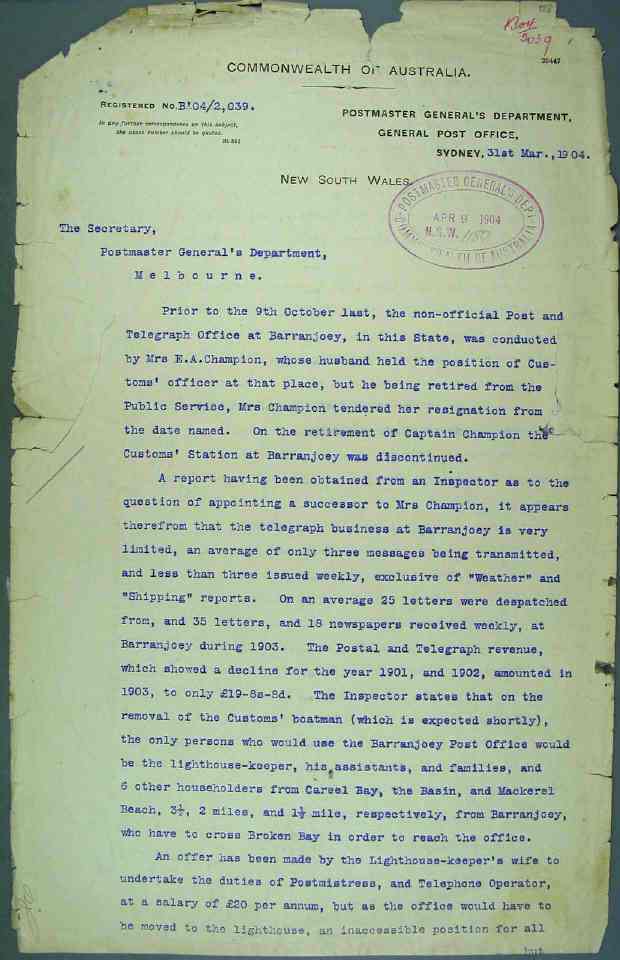
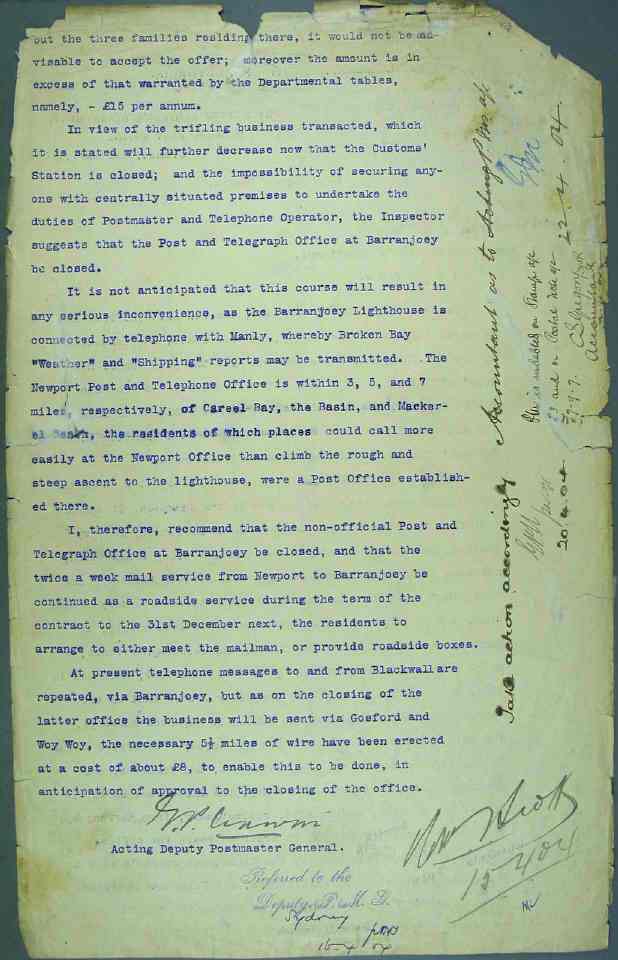
In 1932, the Barranjoey Lighthouse was converted to automatic operation with the installation of a acetylene gas apparatus and soon after, the first sign of this headland being used to save ships and people was also rendered defunct and 'closed' too:
OFFERS, closing with the Commonwealth Works Director. Customs-house. Sydney, at 2 p.m. on MONDAY. 26th June, 1933, are Invited for the Purchase and Removal of One Flagstaff from BARRENJOEY LIGHTHOUSE. Advertising. (1933, June 17). The Sydney Morning Herald(NSW : 1842 - 1954), p. 18. Retrieved from http://nla.gov.au/nla.news-article28029207


.jpg?timestamp=1707416129938)

.jpg?timestamp=1707416223245)


.jpg?timestamp=1707416322130)

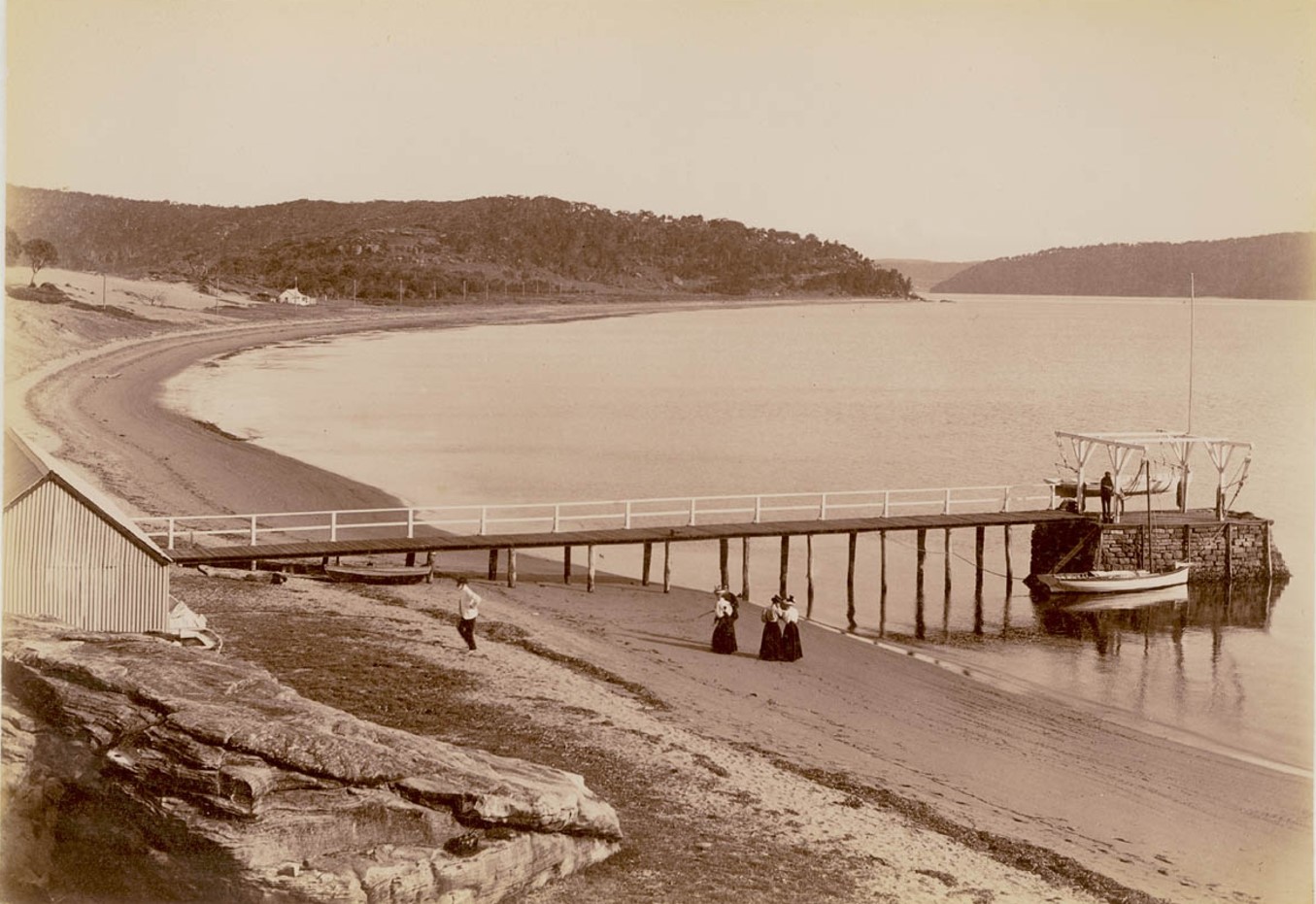
Above: Wharf, Barrenjoey, Hawkesbury River, 1900-1910. Pic No: a116421, Courtesy of The State Library of NSW
The Commonwealth of Australia Act, 1901, transferred of the Customs Department to the Federal jurisdiction. The collections of customs and excise by the New South Wales Government ceased on 31 December 1900 and the Broken Bay Customs Station was closed in 1904, although it operated as a telegraph station until 1920.
After then the Customs Officers Cottage was rented out:
Whereas immediate possession of the property situated on the Defence Reserve at Barrenjoey, New South Wales, is not required for any public purpose, authority be granted for the disposal of such property by lease to Mr. Charles Nott, Holt House, 56 York-street, Sydney, for a period of ten (10) years from the 1st January, 1921, at a rental of £26 per annum.— N.L.20/3279. Government Gazette Notices (1921, April 7). Commonwealth of Australia Gazette (National : 1901 - 1973), p. 620. Retrieved from http://nla.gov.au/nla.news-article232182231
THE Governor-General in Council has approved that authority be granted for the following leases and licences :—
Whereas immediate possession of the property known as the old Customs Cottage, and situated at Barrenjoey, New South Wales, is not required for any public purpose, authority be granted for the disposal of such property by lease, for a period of five (5) years from the 1st May, 1923, at a rental of 8s. per week.—(N.L. 25T/747.) Government Gazette Notices (1923, April 26). Commonwealth of Australia Gazette (National : 1901 - 1973), p. 593. Retrieved from http://nla.gov.au/nla.news-article232521924
LEASES.
THE Governor-General in Council has approved that authority 'be granted for the following leases:—
Whereas immediate possession of the old Customs Cottage site on the Defence Reserve, Barrenjoey, New South Wales, at present occupied by Mr. Charles Nott, is not required for any public purpose, authority has been granted for the lease of such property for a period of twenty (20) years from the 1st September, 1926, and thereafter from month to month, at a rental of £20 per annum, subject to the following conditions:—
(1) That the building will be in accordance with the plan and specifications agreed to between the Commonwealth Works Director for New South Wales and Mr. Nott, such building to be erected to the satisfaction of the Works Director for New -South Wales;
(2) That the 'building is to be kept in a reasonable state of repair until handed over to the-Commonwealth at the expiration or sooner determination of the lease; and
(3) That the Commonwealth will have the right to take over the building and site at any time if required for Defence purposes, on payment of a fair and reasonable sum for the improvements.
Otherwise, the lease will be on similar terms and conditions to those contained in the existing agreement. (In lieu of Executive Council Minute No. 21, of 6th April, 1921 ) — A.25/252. LEASES. (1926, September 30). Commonwealth of Australia Gazette (National : 1901 - 1973), p. 1590. Retrieved from http://nla.gov.au/nla.news-article232535735
Palm Beach is one of those places that has the rest of Sydney visiting it on weekends and summer holidays bring a throng of visitors from a few suburbs away or even from overseas. The estuary side of the tombola and the ocean beach attract those who sip champagne and those who prefer cider. Mansions are dwelt in, campers tents and caravans filled the greens where the Governor Phillip Park now is up from the 1920’s until 1970. There were boarding houses and cottages for summer rentals. One of these was Woodley’s ‘bungalow’ in the old stone cottage Custom’s House on Station Beach, just under the lighthouse.
From ‘A Life Enjoyed’ by James Russel Shorter;
There was a holiday at Barrenjoey; spent in an old stone cottage called Woodleys Cottage at the foot of a steep track (Smuggler’s Track) leading up to Barrenjoey Lighthouse. - To get there we had to row from Gow’s Wharf at Palm Beach, Pittwater. In those days Palm Beach and Cronulla were regarded as far enough to go for a holiday; but on one occasion we let our hair down and rented a cottage at Wallarah Point, Tuggerah Lakes, reached by launch down the creek from Wyong. I can still taste the succulent prawns we used to catch there.
Incidentally, the stone cottage under Barrenjoey was one of three customs cottages built in 1862 together with a substantial stone jetty. The customs station had been established there prior to this, in fact in 1843, as a result of the increased smuggling in Broken Bay. As early as May 1846 the Commissioner of Customs in London reported that the Custom Station at Broken Bay had been "successful in checking smuggling."
Prior to the first World War transport to the Peninsular and Palm Beach in particular was, to say the least, difficult. Proceeding from Circular Quay one took a ferry to Manly, then a horse-drawn streetcar to Narrabeen where a ferry crossing was made of the lake. A sulky continued the journey to Church Point and finally one took another row-boat ferry to Palm Beach.
At the time we were there, the Summer of 1919/20, transport had improved to the extent that we were able to travel by launch from Newport to Palm Beach where a small wharf had been built at Gow's boat-shed, immediately south of Observation Point. From there we proceeded by row-boat to the old Customs Jetty.
At that time Palm Beach Telephone Exchange had only 14 subscribers, and the Barrenjoey Lighthouse was still lit by a kerosene lamp consuming 4 gallons of kerosene each night.
I'm not sure how my parents came to choose a Barrenjoey custom house for a holiday but I have a vague recollection that it was through their friends Ma and Pa Shimmels who was superintendant of Prison Farm Homes for Juvenilles at Mittagong. Retrieved from; http://rus.shorter.net/a_life_enjoyed.txt
Mr Shorter’s parents may not have been the only visitors to take this cottage for long balmy summers, renting it from the government. The following advertisement, after they would have left, sought new visitors - the Woodleys also had land near the present day Golf Course;
PALM BEACH, Barrenjoey.-Bungalow,. furnished, _surfing, fishing, tennis. W. Woodley. 'Ph.. N. S35. PALM. BEACH-Furnished Cottages to Let or Sale, 2 bedrooms, large verandah, near surf. _ Albert Verrills, Palm Beach, Pittwater. Advertising. (1919, April 26). The Sydney Morning Herald (NSW : 1842 - 1954), p. 22. Retrieved from http://nla.gov.au/nla.news-article28098303
Weather records for December and January 1919, just after the Great War (WWI) show heavy rains in December and a steady 73 degrees Fahrenheit or a cooler January then expected and with SSE breezes and fine, clear and dry skies and seas. This may have been a relief as September 1919 brought one of the hottest Spring days on record up until then. Either way visitors would have had fishing, exploring the headland and swimming to keep them occupied. The cottage remained under the keeping of the Woodley family up until 1976 when it was burnt down.
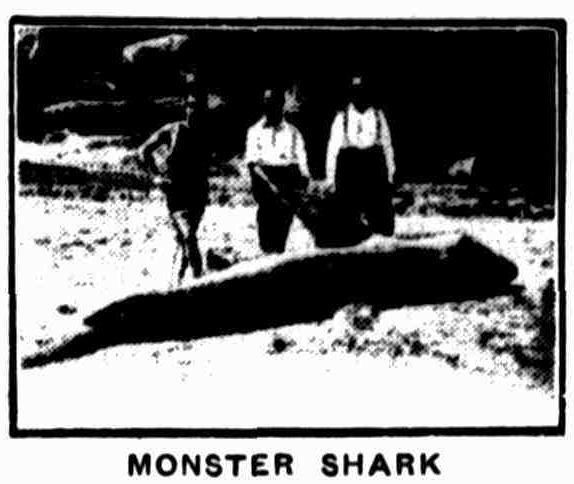
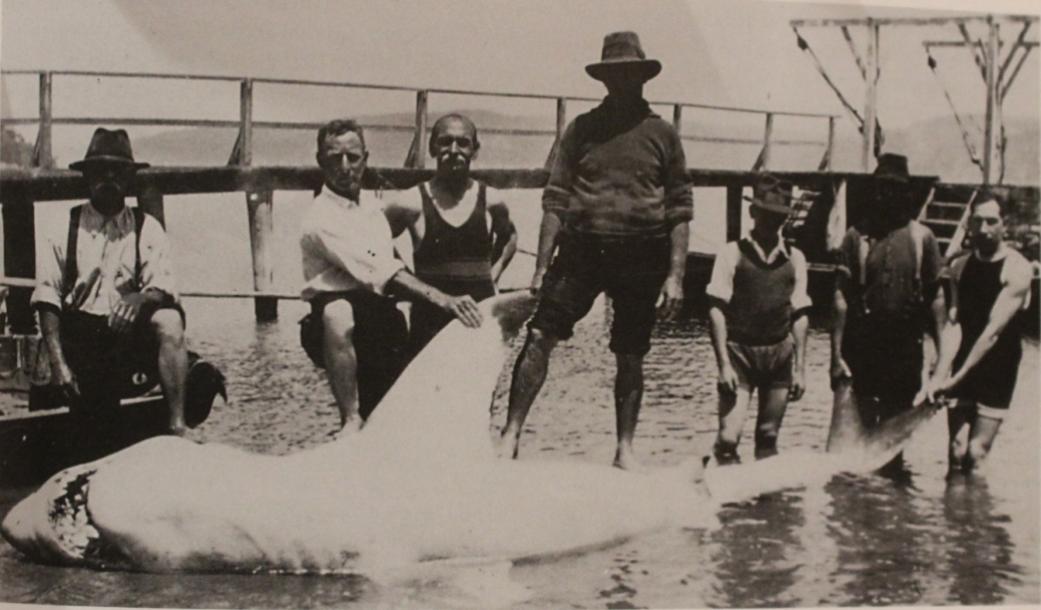
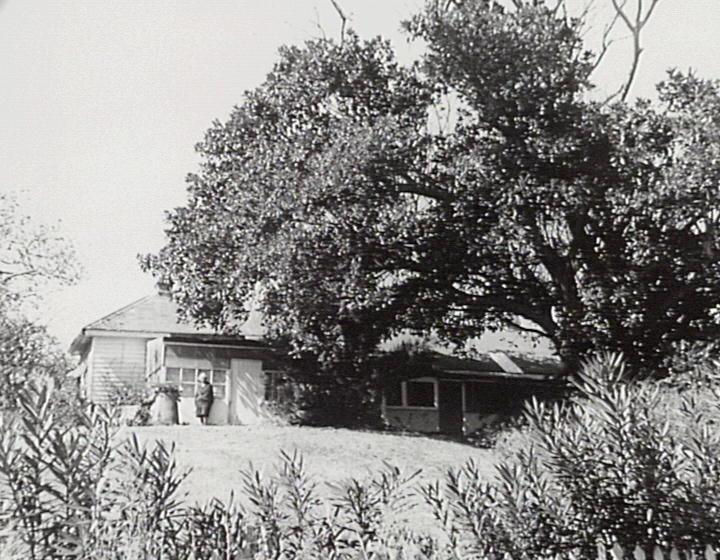
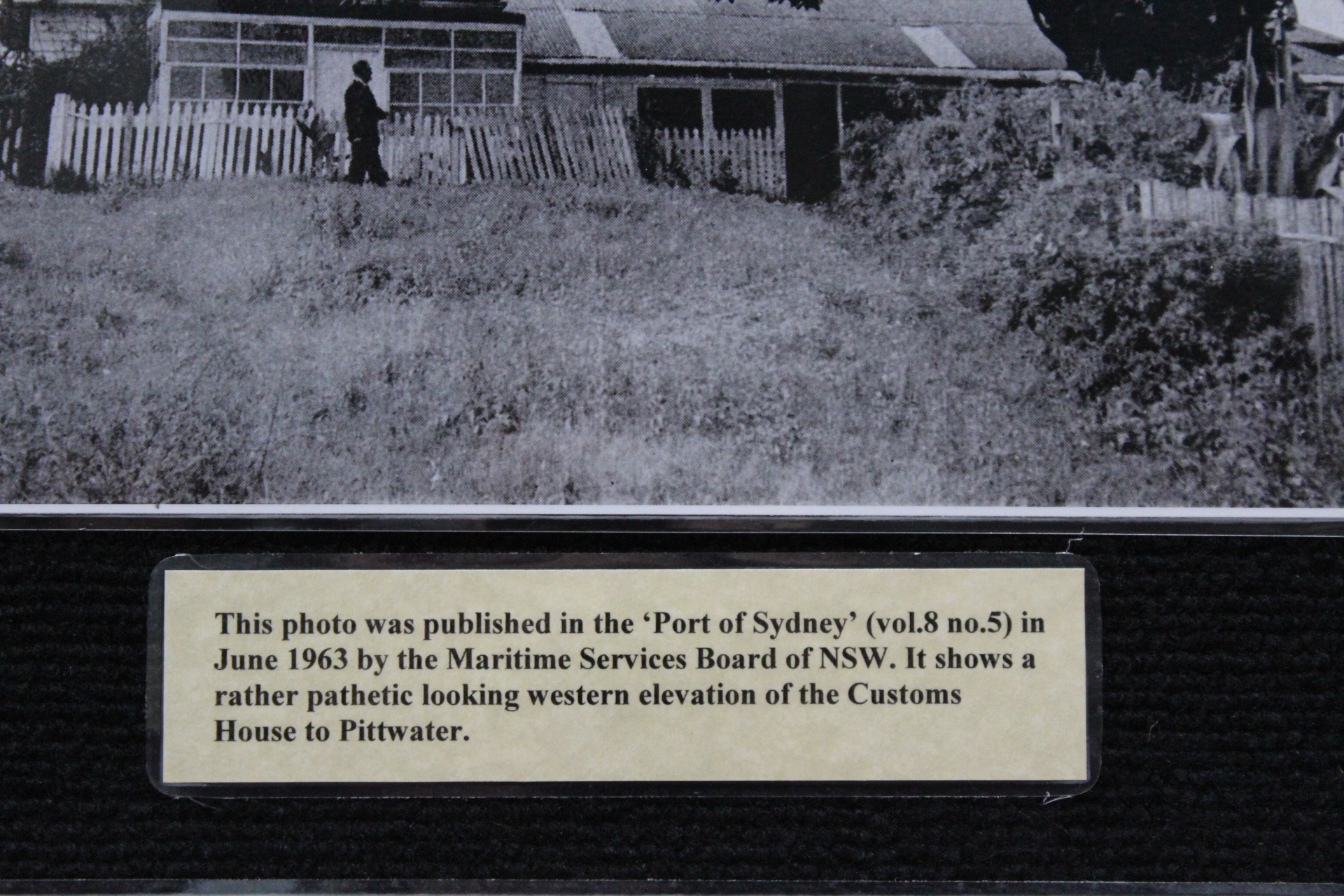






.jpg?timestamp=1707936765204)
.jpg?timestamp=1707936720344)
.jpg?timestamp=1707936809460)
.jpg?timestamp=1707936867493)
.jpg?timestamp=1707936899122)
Extras - references
- Ah Me-The Beauties Of Nature! By JUDY TUDOR January 13, 1945
- Albert Thomas Black - History
- Barrenjoey Headland - Amendments Alarming Community
- Barrenjoey Headland Bushfire - Pictorial Update - Phoenix Landscape arises
- Barrenjoey Commercialisation Canned by NSW Heritage and Environment Minister - Issue 123
- Barrenjoey Headland - Bushflowers Spring 2012
- Barrenjoey Headland Old and New Pictorial
- Barrenjoey Headland Thriving After Bushfires - On Friday Environment Minister Rob Stokes announced more than $3 million over four years to restore the historic Barrenjoey Lighthouse and revitalise the Barrenjoey Headland heritage precinct. Friday was also the day the NSW Environment Minister announced the adoption of the amendment to Ku-ring-gai Chase National Park and Lion Island, Long Island and Spectacle Island Nature Reserves Plan of Management.
- Barrenjoey Headland - The Lessees - History
- Barrenjoey Lighthouse - The Construction - History
- Barrenjoey Lighthouse Walk by Geoff Clarke
- Barrenjoey Light Keepers - History
- Barrenjoey Rally Against Proposed Ammendments to Plan of Management and Commercialisation of Barrenjoey Headland - For the Record
- Barrenjoey Rally Pictorial Issue 120
- Bi-Centenary Commemoration of Governor Phillip Honoured In Pittwater - Barrenjoey Repairs and Renovations Announced
- Broken Bay Customs Station At Barrenjoey - History
- The Barrenjoey School 1872 to 1894 - History
- Front Page Issue 120
- Front Page Issue 188 - Barrenjoey Rejuvenation continues
- Front Page Issue 196 - Barrenjoey Lighthouse Rejuventaions 1.1.2015 - A stroll Around the Headland + First Few Days in Pittwater 2015 Pictorial
- Governor Phillip's Barrenjoey Cairn - History
- Green Wing Press Launched
- International Lighthouse Lightship Weekend 2013 at Barrenjoey
- Palm Beach Golf Course - History
- The Red Light Of Palm Beach by Jervis Sparks
- Woodley's Cottage - History
- Jervis Sparks - Profile
- John Black - Profile
- George Mulhall - First Lightkeeper at Barrenjoey and First Rowing Champion of Australia - History
June 24, 1837 Mr. John Broadley Howard, of the Customs' Department, - called in and examined :-I was a resident in Bengal from the year 1827 to 1833. I was employed in the cultivation of indigo. We used to sow abut 8,000 acres annually. The land was cultivated by Boonaha, Hindoos, and Mahometiass. Their wages were about three rupees per month. The labourers found their own rations in all cases. The Boonahs came down from the Hills in gangs of from fifty to two hundred. They were under the superintendence of a sirdar or leader. I have always understood that after two or three years' residence in the Lower Provinces, they return to their own country. They are ac-companied by their wives and children. The women also engage in agricultural employments, at wages somewhat lower than the men. They were employed by as, first in digging the land with a "cadda lee" (a sort of pick-axe), and afterwards in weeding and cutting the indigo—carrying it to the Factory. They were also employed in the preparation of the article. They are very peaceable and quiet. Task-work appeased to answer best with us ; and in hoe-ploughing, one cottah, or the sixtieth part of an acre was reckoned a day's work on rough lands. They used to work from sunrise to sun-set. Their food consists ofrice, fish, and vegetables. They are fond of animal food, and do not, like the Mahometans and Hindoos, object to eat pork or beef. I do not think they could manage an English plough. The ploughs used in India are of a rude construction. They are very unwilling to use English implements ; they say their fathers did without them, and they can do the same. They cannot speak English. They are below the common stature. They are well made, and capable of enduring fatigue; but they are inclined to be indolent, if not looked after. They do not possess the physical strength of Englishman. They will drink spirits, and strong temptation would make them drunkards. Their clothing is very simple, consisting of nothing more than a d'booty or apron, and a " copra" or cotton rest thrown loosely over the shoulders, which they take off when at work. They wear no shoes. Their habitations are extremely simple ; they own no furniture; they sleep on a loose mat, laid on the ground; their amusements are innocent ;they delight in hawking and wild boar hunting, and in the evening they sing an play on their " Tom-Toms;" they marry very young. It s common to see a mother only twelve years old. Their religion I am unable to speak of. I have only been a few months in this Colony, and I am, therefore, unable to speak with precision as to their usefulness to settlers. I do not think they could use the common spade; they would be a service in brick-making, weeding. planting potatoes. There are a class of persons in India called " Barree -wallahs," who would answer better as shepherds if they could be induced to emigrate. I do not think any of the Bonnahs are acquainted with the management of live stock I have occasionally employed them as grooms : they have no scruples about caste, and aredespised by the Hindoos and Mahometans. Theyare decidedly less cunning than the other natives. We found them very useful, and could obtain them in abundance at certain seasons.; that is from the month of October to Febrnary. As to the best mode of obtaining a ship load of Boonahs, I would suggest that an agent, acquainted with their manners and language should be sent to Calcutta, and from thence proceed up the Ganges to the manufacturing districts - to Jessore and Kishasghur, where he might engage them for a team. They would require about 20 rupees each in advance. Great care should he taken in selecting them--as they differ very much. Their rations on ship board would he similar to those served out to Lascars. The women would be of no use to the Colonists as domestic servants. They are particularly faithful to their husbands. The Boonahs would work best in gangs. I do not think they would work singly. The natives on the Cormmandel Coast are a fine strong race, and I should imagine men might be obtained from Madras or any of the ports on the Coromandel Coast. The Coolies at Calcutta would be useless, and I would not recommend their importation. (Concelsia qof Indaina Emigratian--evidence. oaBritia. Emigration in our court.) JUNE 21, 1837. (1837, August 11). The Sydney Monitor (NSW : 1828 - 1838), p. 4 Edition: EVENING. Retrieved from http://nla.gov.au/nla.news-article32156952
TELEGRAMS. Colonial & Intercolonial Messages. BARRENJUEE. Saturday.
The tug Challenge, with a brig in tow, light in ballast, tried to make Broken Bay this afternoon, but, not succeeding, the brig anchored off Cape Three Points, and at 5 p.m. was still at anchor, having fore and main staysails set; but she seemed to be drifting fast to leeward. Wind, S. to S.S.W., blowing a gale, with rain, and the sea rising fast. The tug put into Broken Bay.
The following small traders put in to-day forshelter :-Star of Peace, Prince Alfred, and Eliza. A fresh breezewas running strongly out of the Hawkesbury.
Tuesday. The steamer Pelican, from Brisbane Water to Sydney, sprang a leak, about 4 p.m., off the entrance to Broken Bay. She was at once headed for Pitt Water and beached near the Customs station. It is supposed the injury is only trifling,and can be readily repaired. TELEGRAMS. Colonial & Intercolonial Messages. (1876, July 29). Australian Town and Country Journal (NSW : 1870 - 1907), p. 6. Retrieved from http://nla.gov.au/nla.news-article70602959
THE ETHNOLOGICAL COURT.
The Ethnological Court in the north-eastern gallery, which has for some time past excited so much curiosity on the part of the public, from the fact that they were excluded from it, and could only gaze at its exhibits over the top of the canvas barricade erected to prevent their admission, is now almost in a state of prepared-ness for the inspection of visitors, only a few finishing touches being required to complete the labours of the gentlemen who have had the matter under their care. We shall take an early opportunity of giving a detailed description of the various exhibits, but must at present content ourselves with stating the names of exhibitors and the localities from which their exhibits have been obtained. This Court will probably be one of the most thoroughly popular in the Exhibition. The following list shows the number of exhibits, the exhibitors' names, and the localities represented: Mr. A. T. Black, Customs, Broken Bay, New Zealand and Solomon Island; 507-891, THE ETHNOLOGICAL COURT. (1879, November 10). The Sydney Morning Herald (NSW : 1842 - 1954), p. 6. Retrieved from http://nla.gov.au/nla.news-article13450036
FOR PEAT'S FERRY.-The fast and commodious steamship MARRAMARRA leaves Patent Slip Wharf at9.30 a.m. Cargo received all day. Freights pin able in Svdnev. MELVEY and FORD. GOSFORD, BRISBANE WATER. Advertising. (1885, August 18). The Sydney Morning Herald(NSW : 1842 - 1954), p. 1. Retrieved April 4, 2013, from http://nla.gov.au/nla.news-article13595557
An item of interest that occurred about this time may be mentioned. During one of the many floods in the Hawkesbury the tool chest of Captain Books was washed away. - Further down the river lived a Captain Peter Melvey, with his wife and family, and at the time we refer to Mrs. Melvey's sister, Miss Annie Williams, was staying 'with her. Whilst out rowing' one day they discovered a chest floating in the stream, and on being towed ashore and opened it was found to be the property of Captain George Books. Captain Melvey having informed the owner of the whereabouts of his chest, the latter called on his Way to sea to pick it up. He met Miss Williams, and a little later began a courtship that led to many ;years of marital happiness. AN APPRECIATION. (1934, September 28). Windsor and Richmond Gazette (NSW : 1888 - 1954), p. 9. Retrieved from http://nla.gov.au/nla.news-article85797947
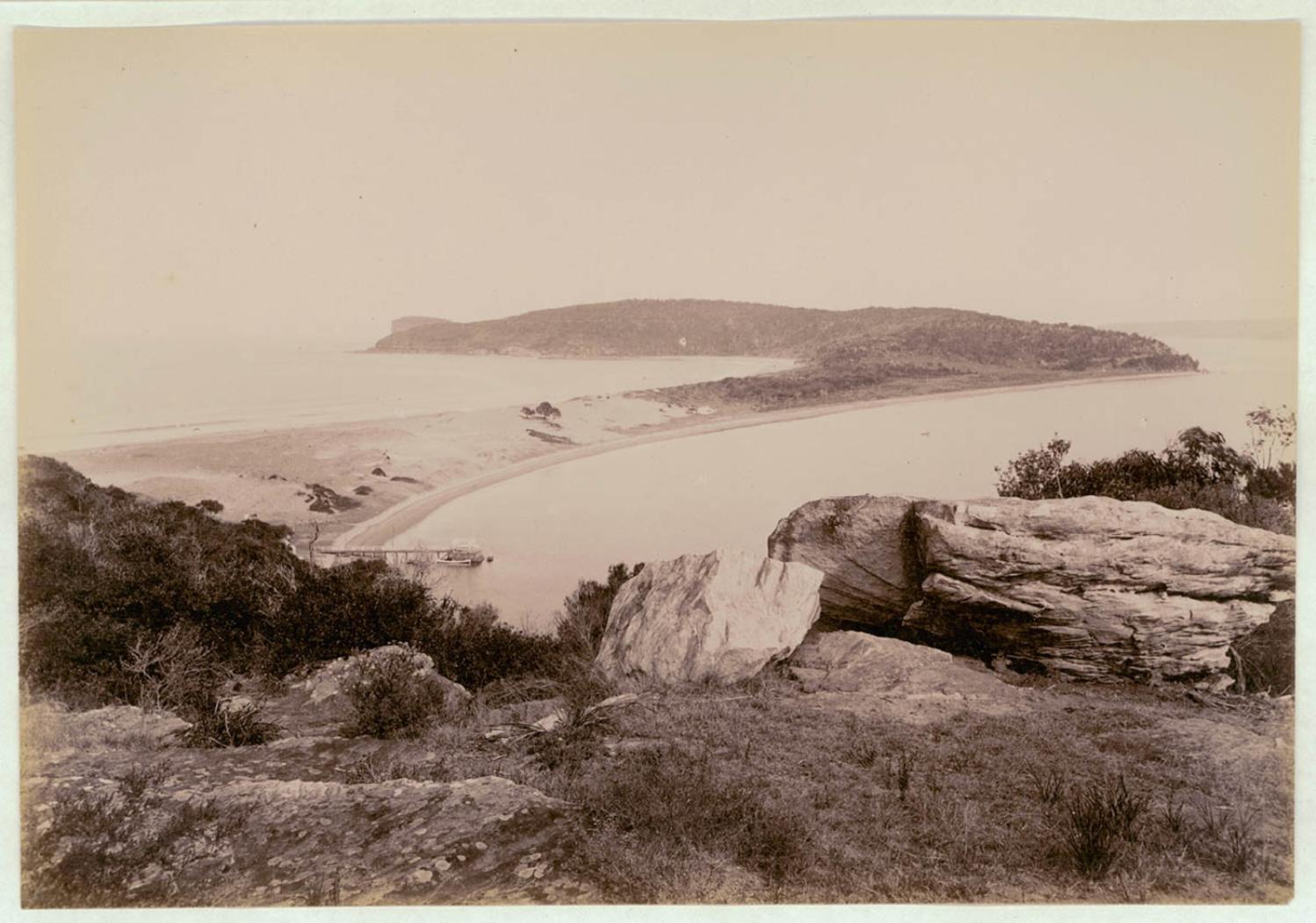
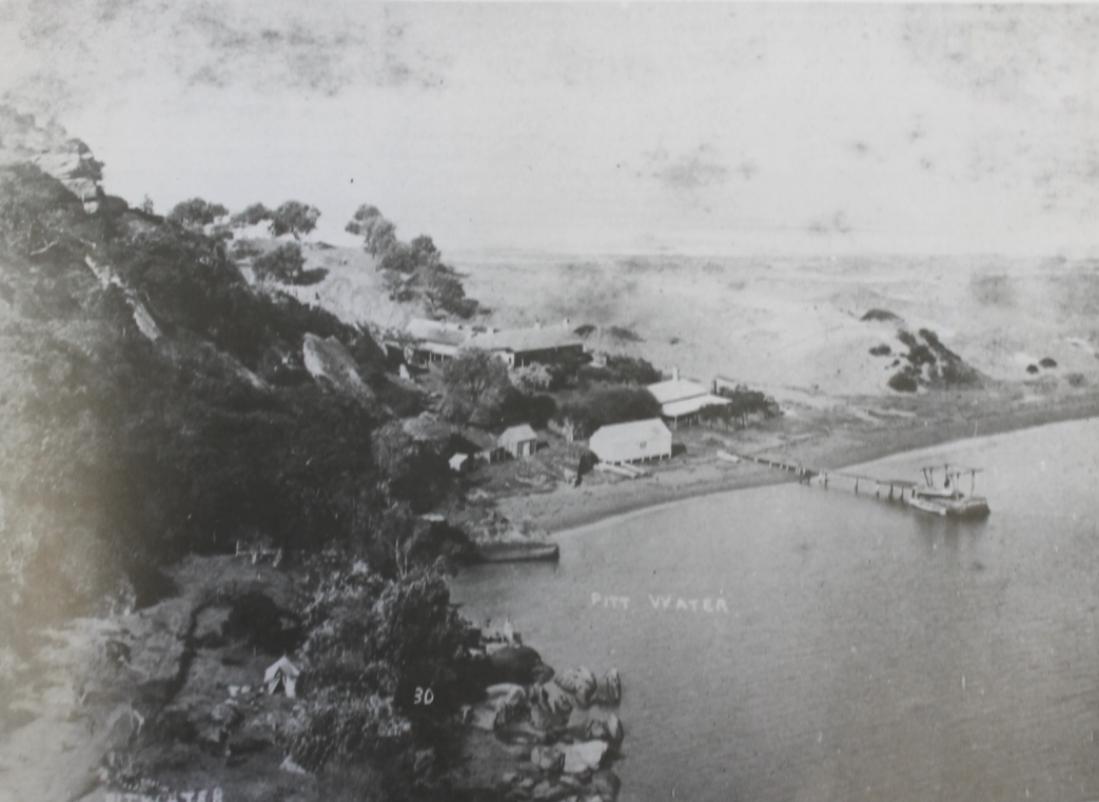
As we approached we met with all the materiel of a fishery. First, a long and apparently valuable seine was spread out on the grass a little above the beach to dry, und a boat hauled up on the sand showed that it had been recently used. Another, and a somewhat smaller, boat was moored out in deep water ready for use. A little further on, about ten or a dozen bushels of guardfish were spread out on the grass to cure, with small hopes, as I should imagine, of their drying under the influence of the weak and wintry sun. Next a small tent full of barrels of all kinds, but principally the light American oak flour barrels, showed the preparations for packing the fish obtained and dried during the summer season. Ten or a dozen yards further on was another tent,-the fish store-in which were piled up heaps of snapper and large-sized bream, all cured and ready for the Celestial consumption for which they had been prepared; and here we found the two Chinese, master and man, who owned the location. The master appeared a tolerably decent looking and intelligent man, who spoke English sufficiently well to be understood, and who very readily gave us all the information in regard to his fishery that we demanded from him.
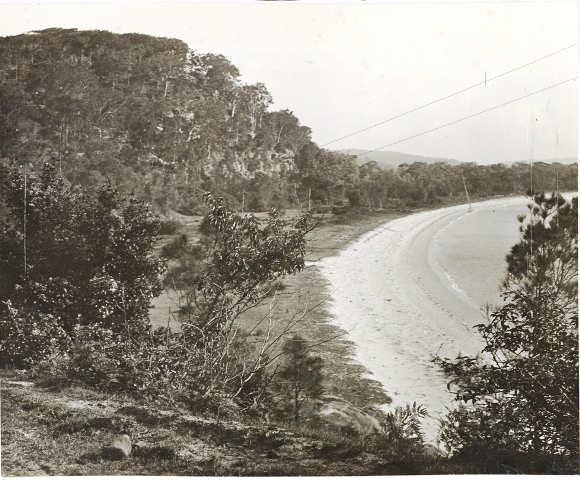 Their mode of procedure is this:-they fit out boats for persons willing to fish for them, of course keeping an account against them, for materials, rations, &c, supplied, and taking from them all the fish they catch suitable for curing, at a certain fixed price. The smaller fish they allow them to take into the Sydney market. In the season they have from fifteen to twenty boats at work fur them, principally manned by Europeans, besides which they buy from all who choose to come to them, offering to the fishermen the further convenience of the store they carry on, and from which they supply tea, sugar, and biscuit at a very small advance upon Sydney prices. We bought, at 3s. per lb., some really fine black tea, very much superior to any that is to be procured ordinarily at the grocers' shops of the metropolis. Sugar was 6d. per lb., similar to that for which 5d. is paid in Sydney ; whilst Wilkie's best cabin biscuits are retailed at 4d. per lb. As soon as the fish are procured they are cut open and gutted, lightly rubbed with salt, and then spread out in the sun to dry. In the summer this is very speedily and effectually done, although not without the fish obtaining that peculiarly rank and offensive smell that all who have passed by a Chinese store must have noticed. The supply of fish is allowed to accumulate during the summer, heaped in a tent devoted to the purpose, the heaps being occasionally turned, and every care taken against damp and wet; and so soon as the drying season is over-when the sun ís too far from the zenith as to have lost his power-the packing is commenced. No further trouble is taken in the packing, than to lay them in the barrels as closely as they can be got, and to press them down as hard as can be done with the hands. They are then headed up and forwarded to Sydney, to be distributed all over the interior wherever Chinese most do congregate. This season they had obtained about two hundred barrels of fish.
Their mode of procedure is this:-they fit out boats for persons willing to fish for them, of course keeping an account against them, for materials, rations, &c, supplied, and taking from them all the fish they catch suitable for curing, at a certain fixed price. The smaller fish they allow them to take into the Sydney market. In the season they have from fifteen to twenty boats at work fur them, principally manned by Europeans, besides which they buy from all who choose to come to them, offering to the fishermen the further convenience of the store they carry on, and from which they supply tea, sugar, and biscuit at a very small advance upon Sydney prices. We bought, at 3s. per lb., some really fine black tea, very much superior to any that is to be procured ordinarily at the grocers' shops of the metropolis. Sugar was 6d. per lb., similar to that for which 5d. is paid in Sydney ; whilst Wilkie's best cabin biscuits are retailed at 4d. per lb. As soon as the fish are procured they are cut open and gutted, lightly rubbed with salt, and then spread out in the sun to dry. In the summer this is very speedily and effectually done, although not without the fish obtaining that peculiarly rank and offensive smell that all who have passed by a Chinese store must have noticed. The supply of fish is allowed to accumulate during the summer, heaped in a tent devoted to the purpose, the heaps being occasionally turned, and every care taken against damp and wet; and so soon as the drying season is over-when the sun ís too far from the zenith as to have lost his power-the packing is commenced. No further trouble is taken in the packing, than to lay them in the barrels as closely as they can be got, and to press them down as hard as can be done with the hands. They are then headed up and forwarded to Sydney, to be distributed all over the interior wherever Chinese most do congregate. This season they had obtained about two hundred barrels of fish.
Besides this fishing station on Pitt Water, there are also others at Brisbane Water, on Tuggerah Beach Lake, and on Lake Macquarie, all carried on by Chinese. There are several others also to the south-ward of Port Jackson, though my Chinese informant could not give me the names of the places where they ore established. All these fisheries have been formed by Chinese merchants resident in Sydney; that at Pitt Water belongs to a Chinese merchant in George street, whose name I could not make out, although I tried very hard to do so. The Chinese from whom I had these details was a kind of superintendent or manager of the fishery, keeping accounts against the fishermen with perfect correctness, and keeping the books of the station in the same way as an English storekeeper would do. He showed his board of colored beads by which he did all his reckoning, his multiplication, division, addition, and subtraction ; but after about half-a-dozen explanations, which he went through with most exemplary patience, neither of us could make head or tail of it, albeit Nat, who considers himself exceedingly clever at accounts, said he thought he saw what the plan was.
Having purchased our stores, and obtained all the information we could from the boss, we filled our billy with water, and, obtaining the permission of the locataires, put it over their fire. When they found that we were going to take our midday repast, they brought out biscuit and butter and spread them before us, and when our pot boiled, produced their own tea and sugar for our use, thus performing the right of hospitality in true bush fashion. We were rather pleased at this, as we had previously imagined that the very last place to go to for a feed would be a Chinese tent. We made an excellent meal of biscuit, butter, and watercresses, and I think rather astonished master John at the quantity of comestibles that we managed to stow away. They had pressed us very hard to try some of their fish, and they certainly had a string of very fine fat mullet hanging up in their private tent, no doubt as a special delicacy, but neither of us could stand the odour, which nothing but long habit or absolute starvation could have overcome.
All the stronger for our meal-snack, Tom called it-we lighted our pipes, resumed our loads, and bade adieu to our entertainers, thanking them for the kind hospitality which they had furnished, the more particularly as it had been unsought on our part.
Crossing a bright clear brooklet that ran close to the rear of the tents, a couple of hundred yards brought us to a rocky headland forming the northern boundary of the cove on which the Chinamen were located. This we crossed by a miserable track knee deep in mud, and, arrived on the other side, we had Barranjuee full in front of us, about three quarters of a mile distant, with a long cleared flat, that had the appearance of having been at one time cultivated, lying between us and the mountain. This flat, which now intervened between us and Barranjuee, was scarcely two hundred yards across at the widest part dividing the Pacific from Pitt Water, and joining Barranjuee to the main. It is very low, and is fully exposed to whole sweep of the south-eastern gales that at some seasons prevail upon the coast, throwing up the waves in watery mountains upon the long beach that faces seaward, and scattering the spray in drenching showers right across into the bay. A dense scrub of ti tree and honeysuckle grows on the seaward side of the flat, forming a thick protecting belt almost up to the mountain, and this Nat and I determined to push through, whilst Tom went on ahead to the Customs station, whose white cottage we could see glistening brightly against the dark back ground of the vast cliffs of the mountain.
We had been led to expect that on the edge of this scrub we should put up any quantity of wonga wongas, and as Nat and I were desirous of making a triumphal entry into the station with a brace or two of these fine birds hanging at our girdles, we determined upon trying our luck. Carefully, and in a most sportsmanlike manner did we stalk along through the fern, which here grew as high as our waists, and formed an excellent cover for birds if they would but have come there. I fully expected every minute to put up, if not a wonga wonga, at all events a brace of quail; but we went on and on, and still nothing appeared. Nat audibly gave vent to his dissatisfaction, and stated as his private and particular opinion, that we had been humbugged. He uncocked his piece and threw it over his shoulder, whilst I was in the act of doing the same thing, when whirr !-up with a loud flapping of wings, that from its suddenness quite unnerved me and threw me off my guard, rose a magnificent wonga wonga, which in my agitation appeared to me as big as a turkey. It heeled round leisurely in front of me and lodged in the branches of a honey- suckle, full in sight, though out of gun-shot from where we stood, whilst I stood with mouth and eyes open, incapable of doing anything but watching its flight. .... MY HOLIDAY. (1861, September 9). The Sydney Morning Herald (NSW : 1842 - 1954), p. 3. Retrieved from http://nla.gov.au/nla.news-article13063749
The wonga pigeon (Leucosarcia melanoleuca) is a pigeon that inhabits areas in eastern Australia with its range being from Central Queensland to Gippsland, eastern Victoria, Australia. Previously they could be found as far north as Cairns and as far south as the Dandenongs, but due to land clearance, shooting by colonists from earliest times, along with shooting in the 1940s for crop protection, and fox predation, they are rarely seen in these areas. Some sources state their populations have improved.
They are very elusive birds, more often being heard but not seen, producing explosive wing claps when disturbed. They tend to occur on the ground foraging and are located in rainforests, wet eucalypt forests, coastal forests, picnic areas, walking tracks, car parks and gardens. Their diet consists of fruit, berries, seeds from native forest trees and the odd insect.
The wonga pigeon is monogamous and breeds between October and January. It builds a twig platform nest with a diameter of about 30 centimetres, from about 3 to 20 metres above the ground, defended by breeding pairs. The pigeon will sometimes use abandoned nests from topknot pigeons or tawny frogmouths. Its call is a soft 'coo'.
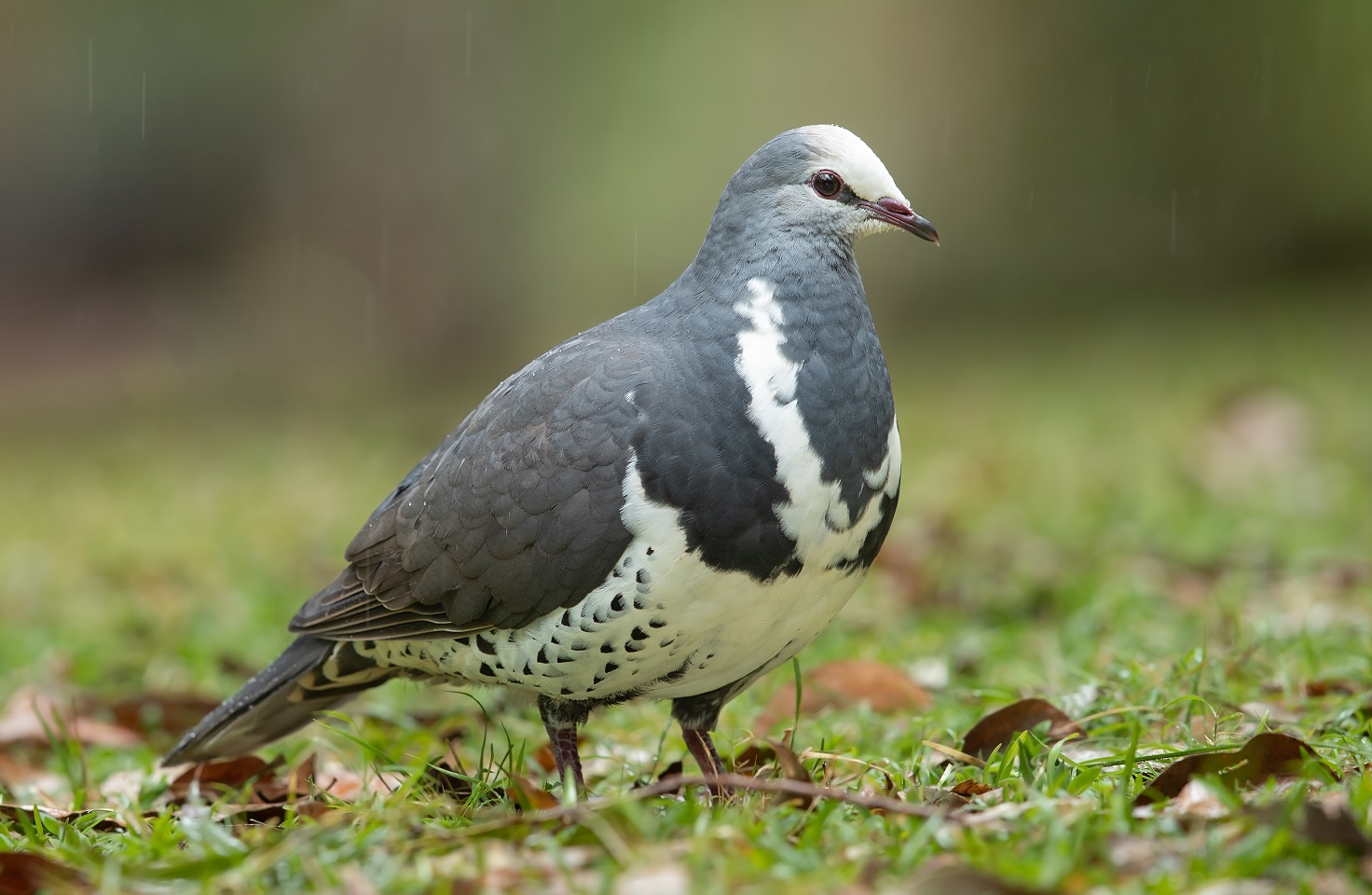
Wonga pigeon (Leucosarcia melanoleuca), Brunkerville, New South Wales. Photo: J J Harrison.
Barrenjoey Headland - More Pages
- Ah Me-The Beauties Of Nature! By JUDY TUDOR January 13, 1945
- Albert Thomas Black of Broken Bay Customs Station and Barrenjoey Headland
- Barrenjoey Artists Commune In The Lighthouse Cottages: Post WWII Social Infrastructure Investment Enriched Australia's Cultural Evolution
- Barrenjoey Headland - Amendments Alarming Community
- Barrenjoey Headland Bushfire - Pictorial Update - Phoenix Landscape arises
- Barrenjoey Commercialisation Canned by NSW Heritage and Environment Minister - Issue 123
- Barrenjoey Headland - Bushflowers Spring 2012
- Barrenjoey Headland Old and New Pictorial
- Barrenjoey Headland Thriving After Bushfires - On Friday Environment Minister Rob Stokes announced more than $3 million over four years to restore the historic Barrenjoey Lighthouse and revitalise the Barrenjoey Headland heritage precinct. Friday was also the day the NSW Environment Minister announced the adoption of the amendment to Ku-ring-gai Chase National Park and Lion Island, Long Island and Spectacle Island Nature Reserves Plan of Management.
- Barrenjoey Headland Slated For Accommodation and Conferences (March 2016 Issue 257): Public to Be Excluded From Keepers, Boatmans and Fishers Cottages and Areas Around These - 30-40 people/beds on Architects Plans - NO Specification Documents Published to accompany these - " We have not excluded the provision of spaces within some of the buildings for community use and small scale gatherings." - OEH/NPWS
- Barrenjoey Headland Keepers Cottages Slated for Accommodation Development feedback on the concept plans can now be made until Saturday 30 April (OEH Page updated April 18) - Community News Issue 263 (May 2016): Barrenjoey Plans Not Going Ahead - Community Rejects enmasse, again.
- Front Page Issue 257: Barrenjoey Slated for Development AGAIN
- Front Page Issue 259: Community Feedback on Barrenjoey 2016 Open Day on New Development Proposal Causes Concern
- Barrenjoey Headland - The Lessees - History
- Barrenjoey Lighthouse - The Construction - History
- Barrenjoey Lighthouse Walk by Geoff Clarke
- Barrenjoey Light Keepers - History
- Barrenjoey Rally Against Proposed Amendments to Plan of Management and Commercialisation of Barrenjoey Headland - For the Record
- Barrenjoey Rally Pictorial Issue 120
- Bi-Centenary Commemoration of Governor Phillip Honoured In Pittwater - Barrenjoey Repairs and Renovations Announced
- Broken Bay Customs Station At Barrenjoey - History
- Front Page Issue 120 Front Page Issue 188 - Barrenjoey Rejuvenation continues Front Page Issue 196 - Barrenjoey Lighthouse Rejuvenations 1.1.2015 - A stroll Around the Headland + First Few Days in Pittwater 2015 Pictorial
- George Mulhall - First Lightkeeper at Barrenjoey and First Rowing Champion of Australia - History
- Governor Phillip's Barrenjoey Cairn - History
- International Lighthouse Lightship Weekend 2013 at Barrenjoey
- Jervis Sparks - Profile
- John Black - Profile
- June 2016 Storm - 1000's of Hands, Ten of 1000's of Community Kindnesses: One Objective - The Community's Record
- Lighthouse Keepers Cottages You Can Rent in NSW - Designed or Inspired by Colonial Architect James Barnet: Includes Historic 'Lit' Days records
- My Holiday by Charles de Boos - 1861
- Palm Beach Golf Course - History
- State Of The Beaches 2015-16 Report: Northern Beaches, Estuarine and Lagoon by Beachwatch, NSW Dept. of Environment & Heritage: Barrenjoey Beach
- The Barrenjoey School (1872 to 1894) - History
- The Red Light Of Palm Beach by Jervis Sparks
- The Stewart Towers On Barrenjoey Headland
- Woodley's Cottage - History